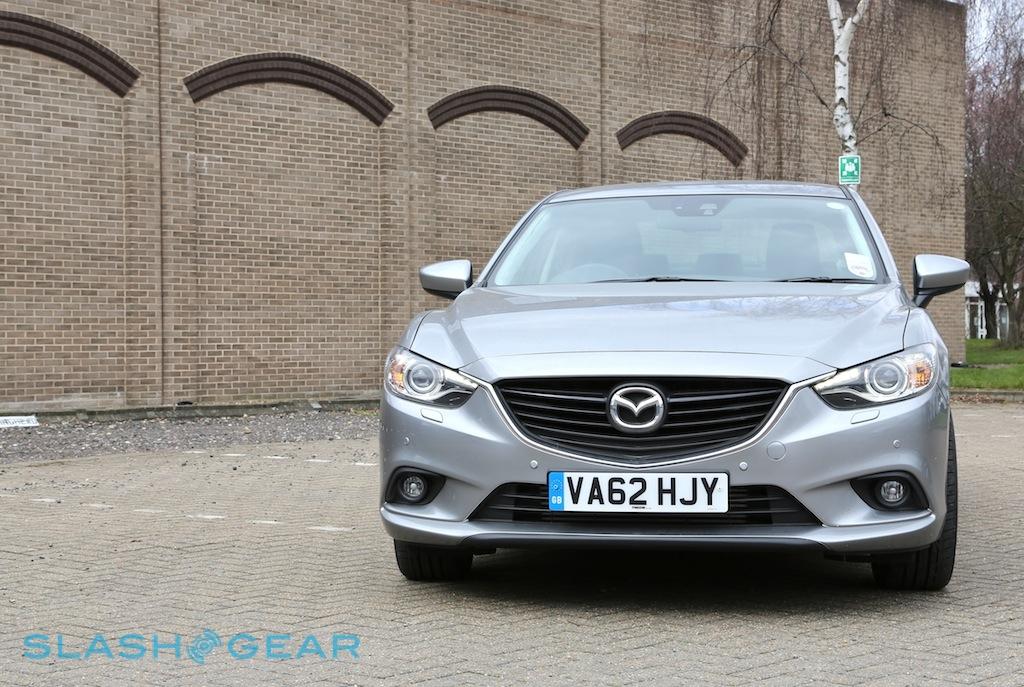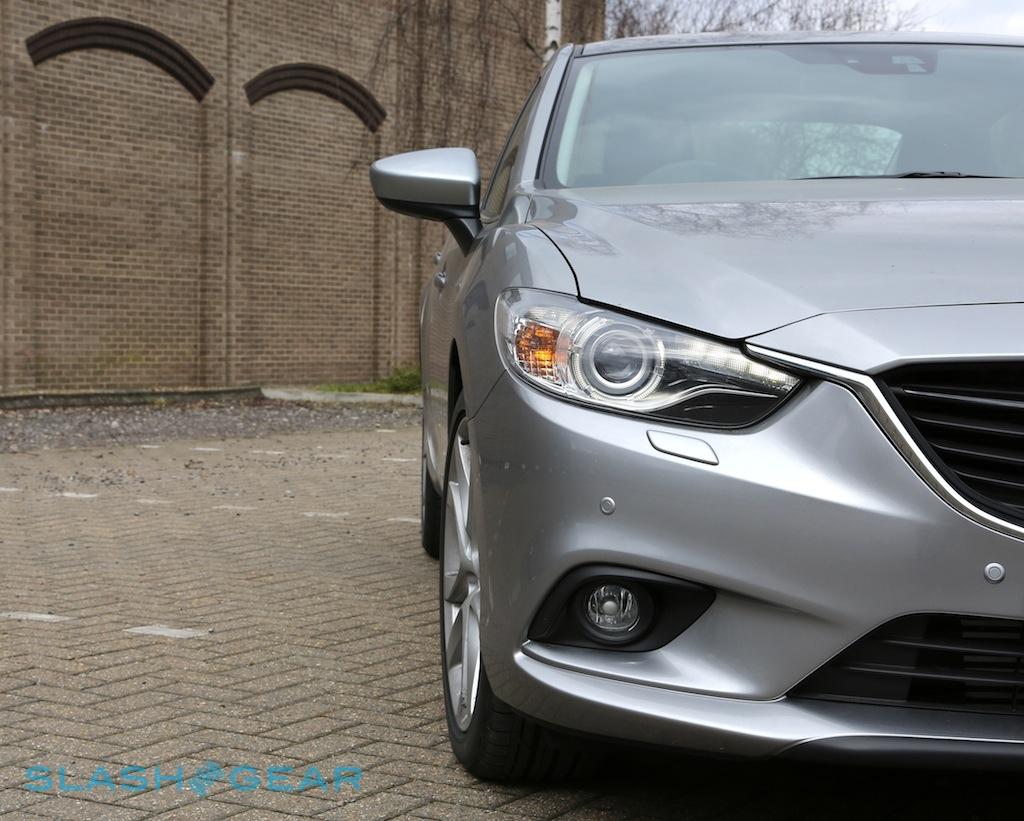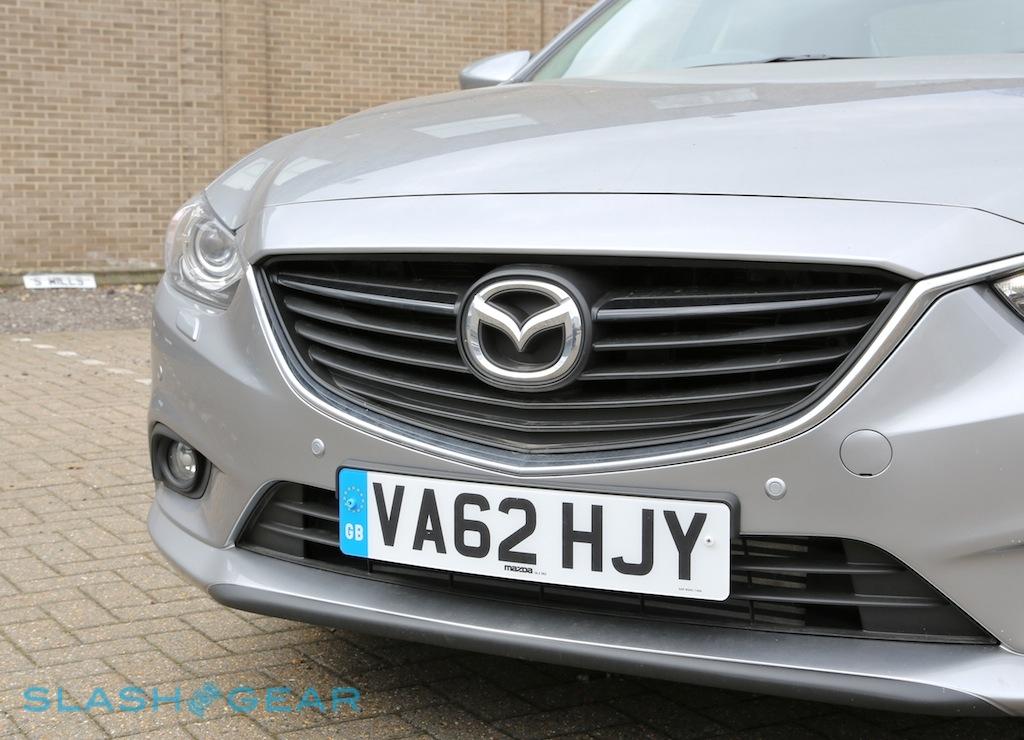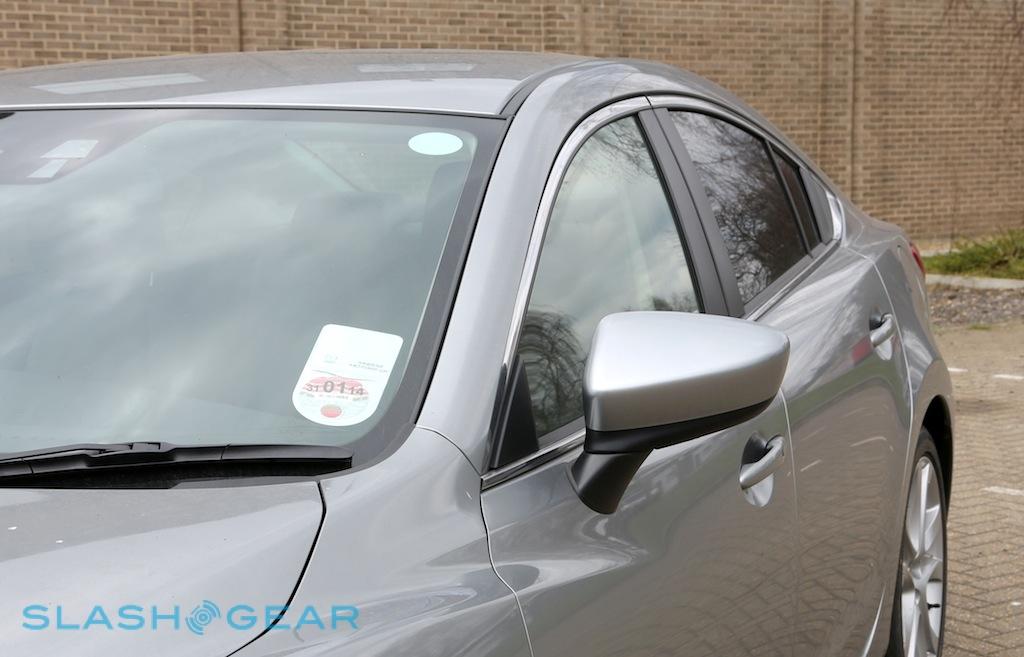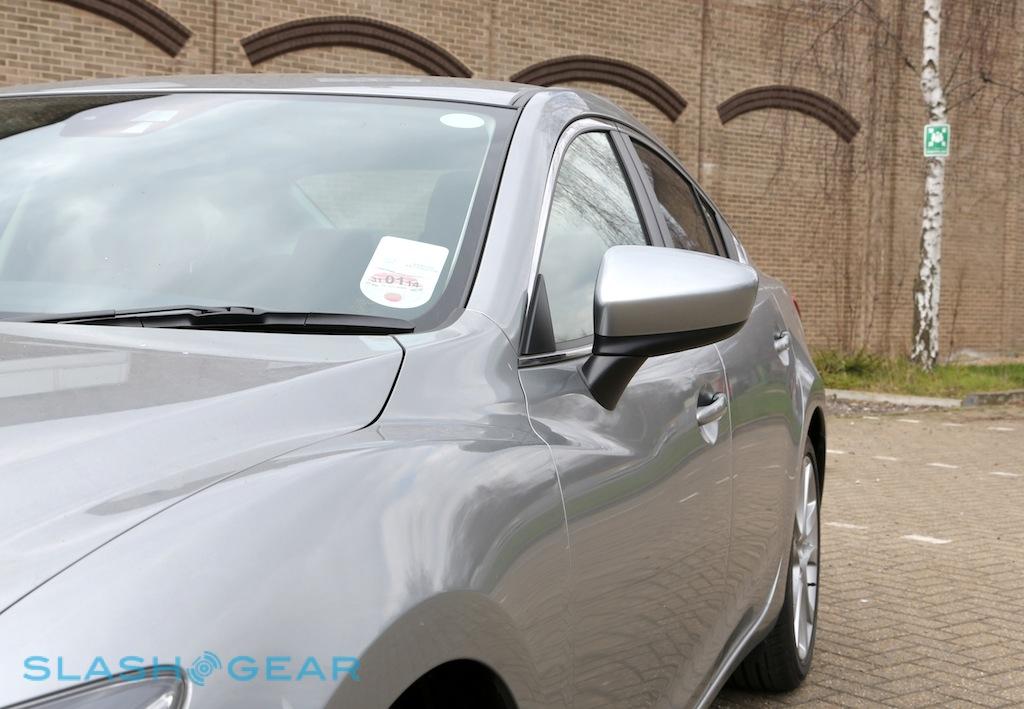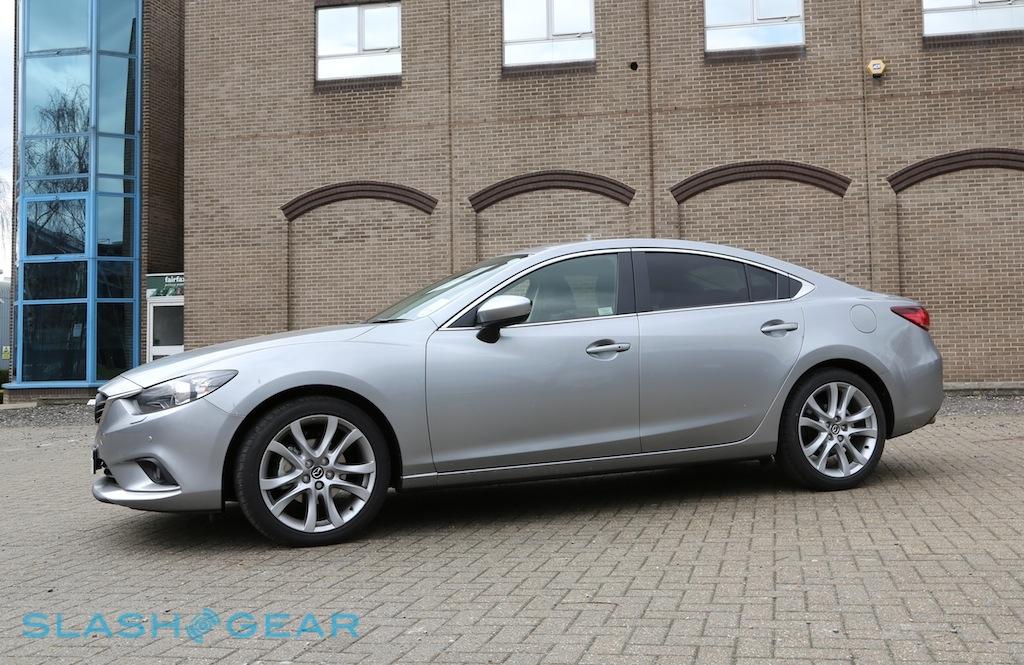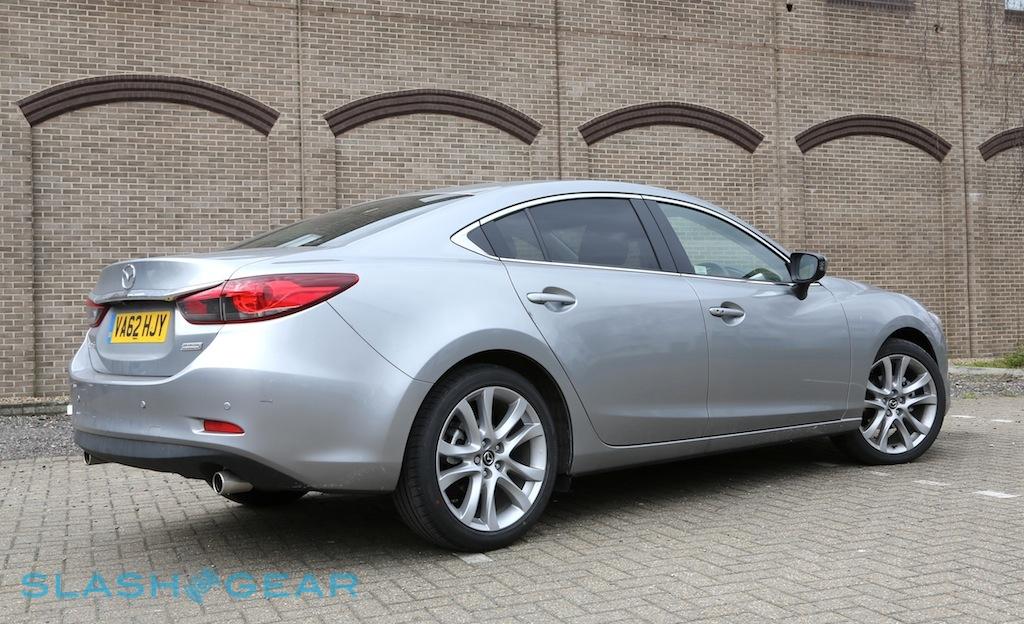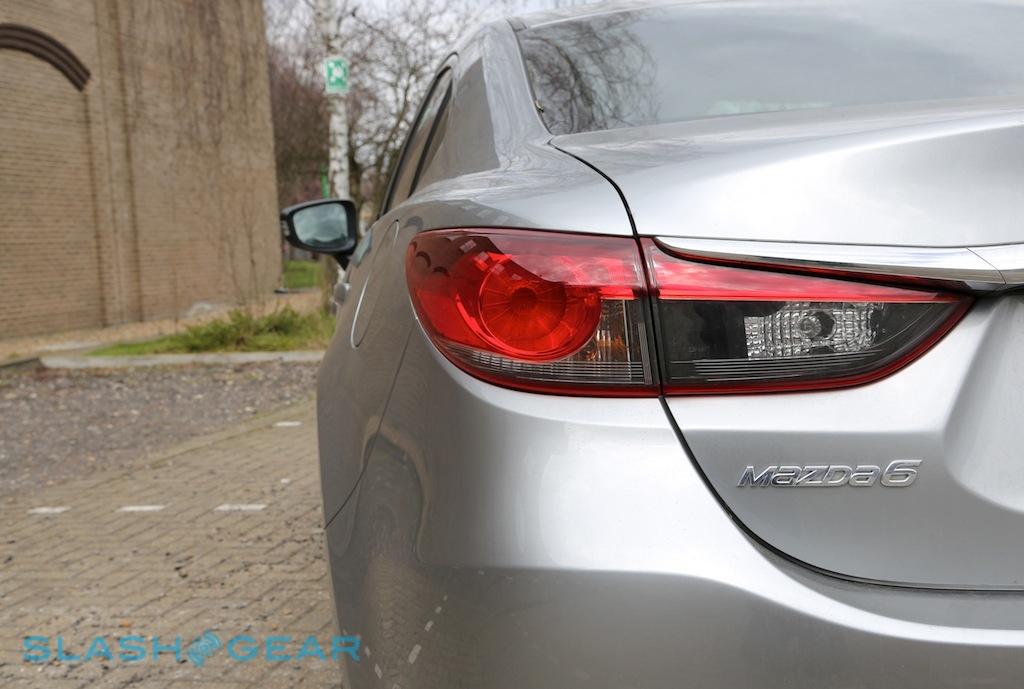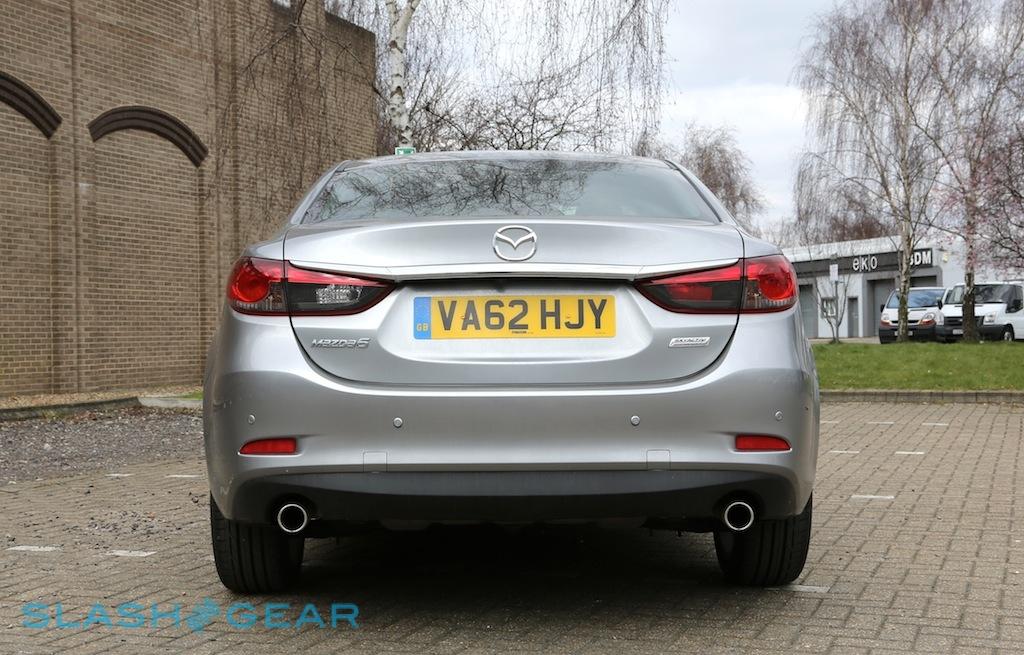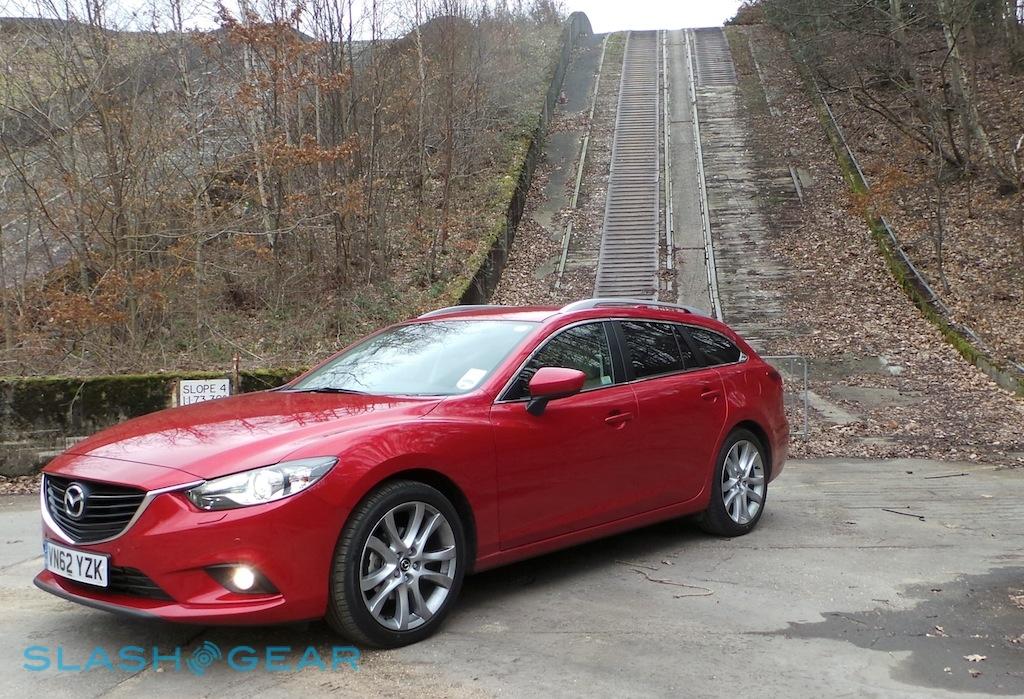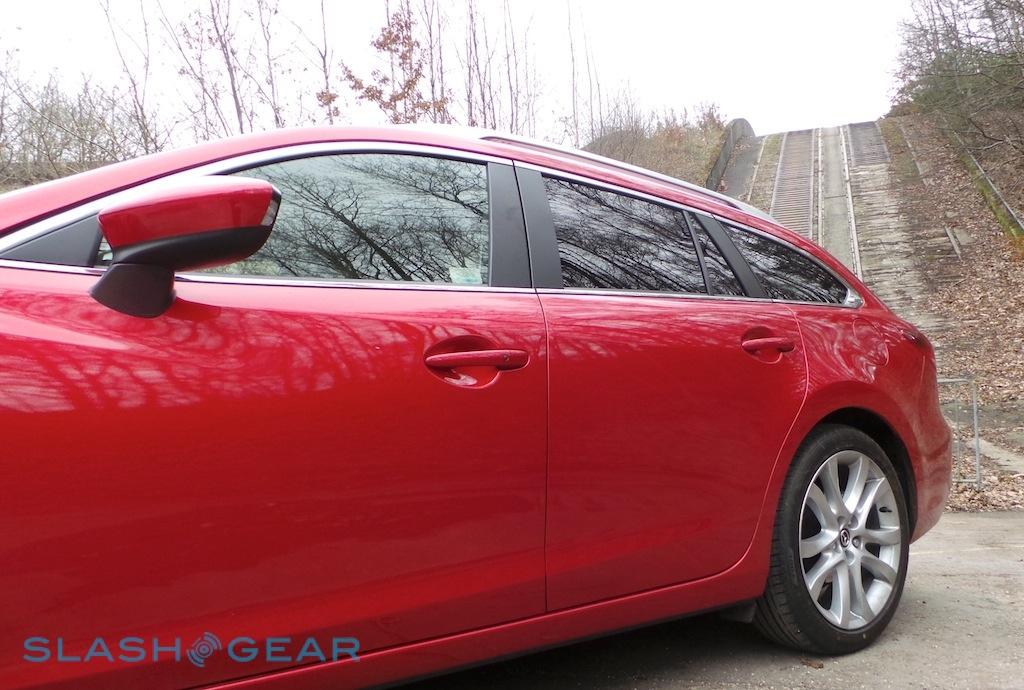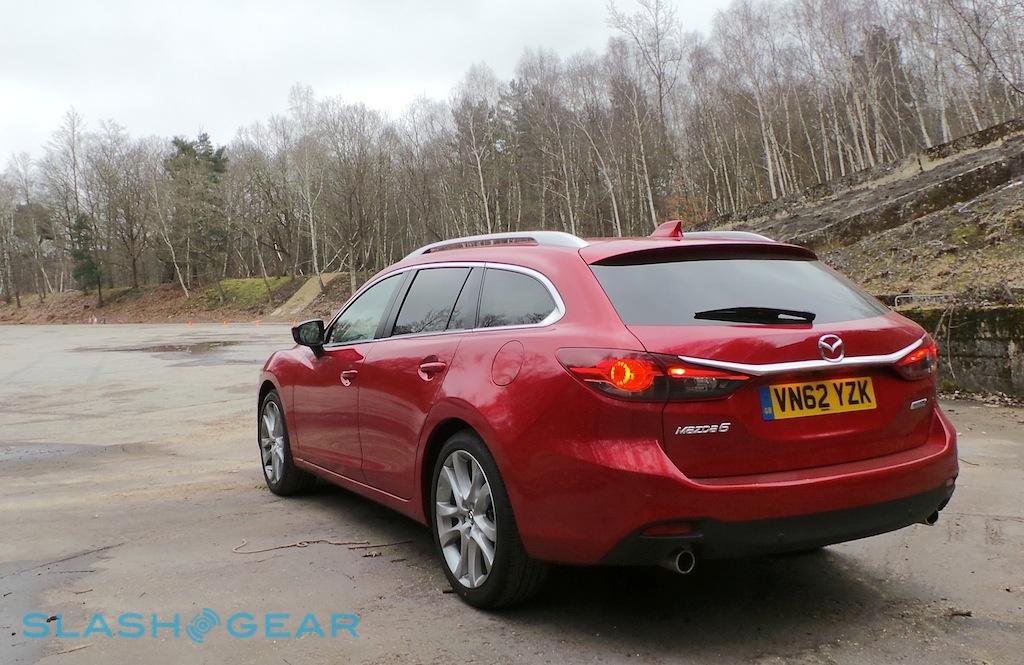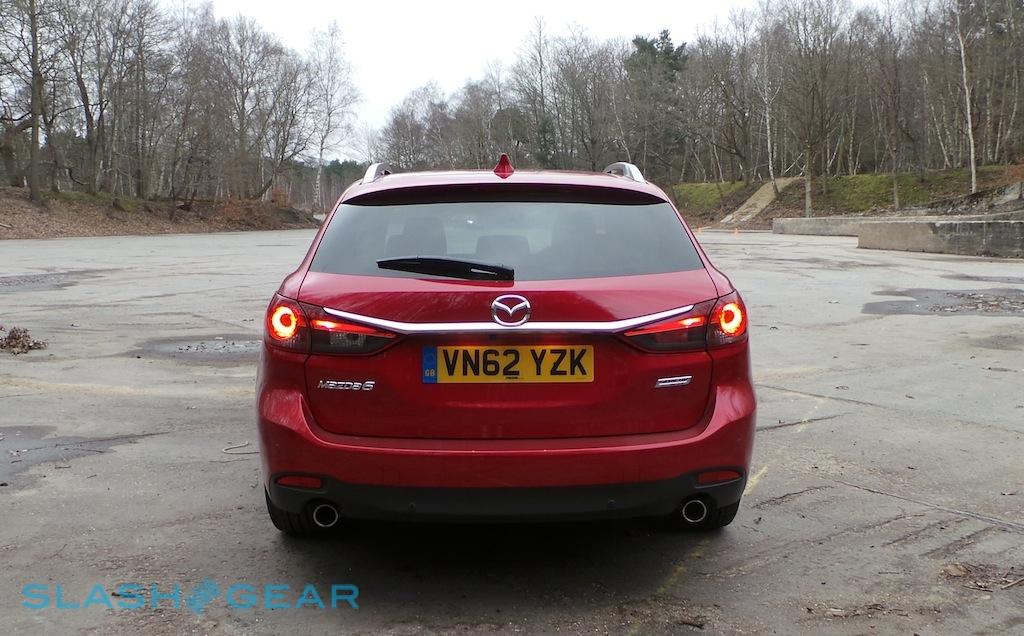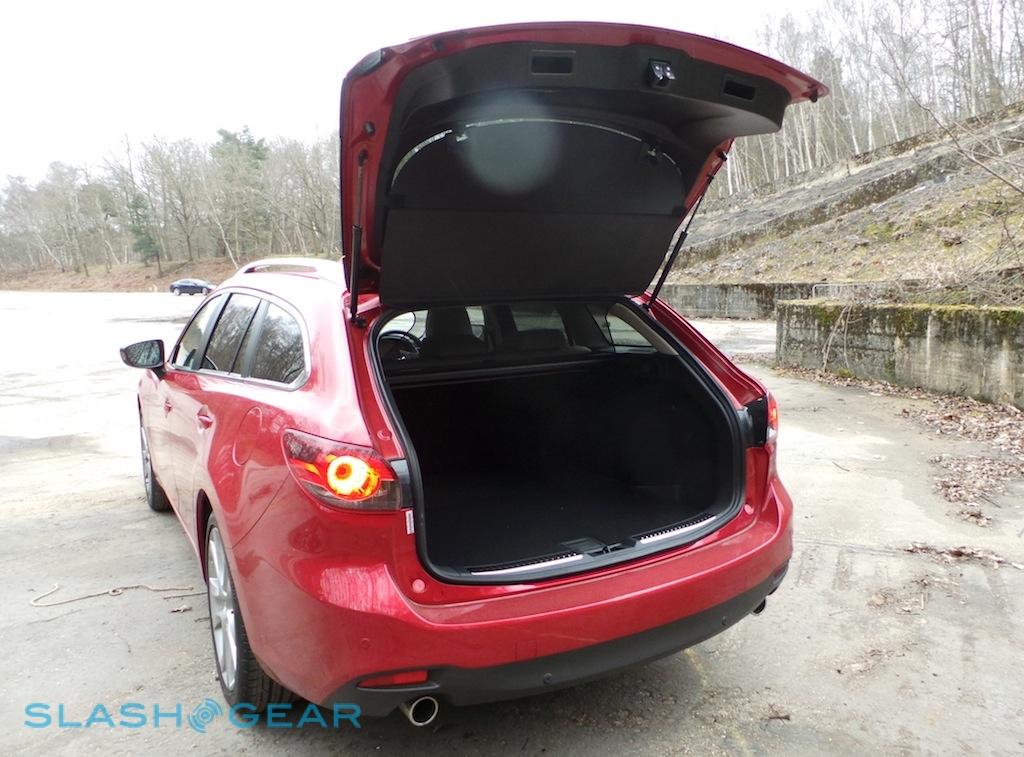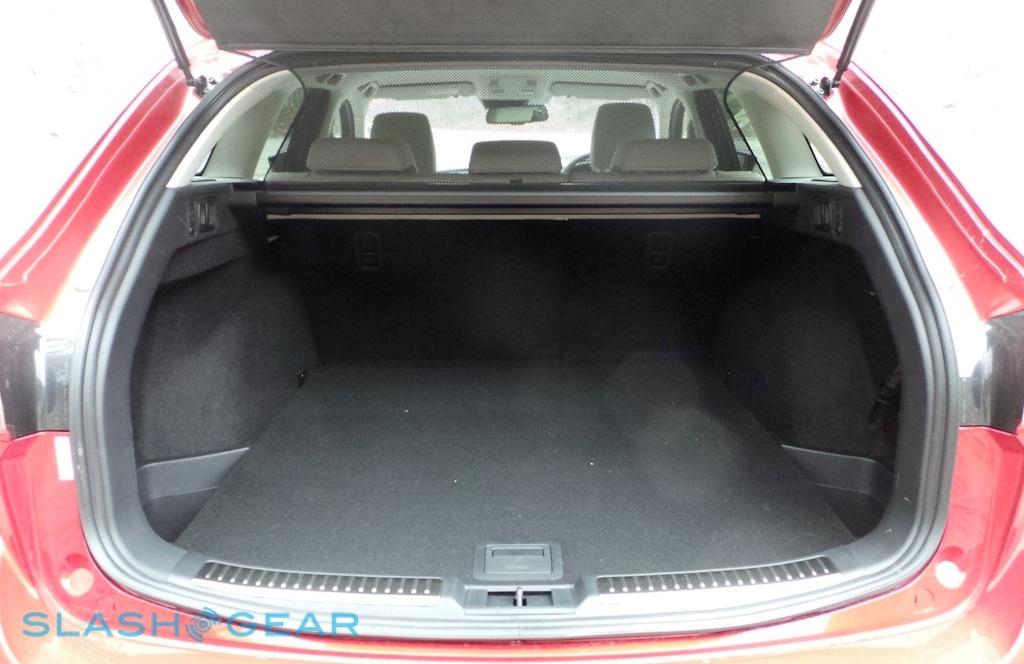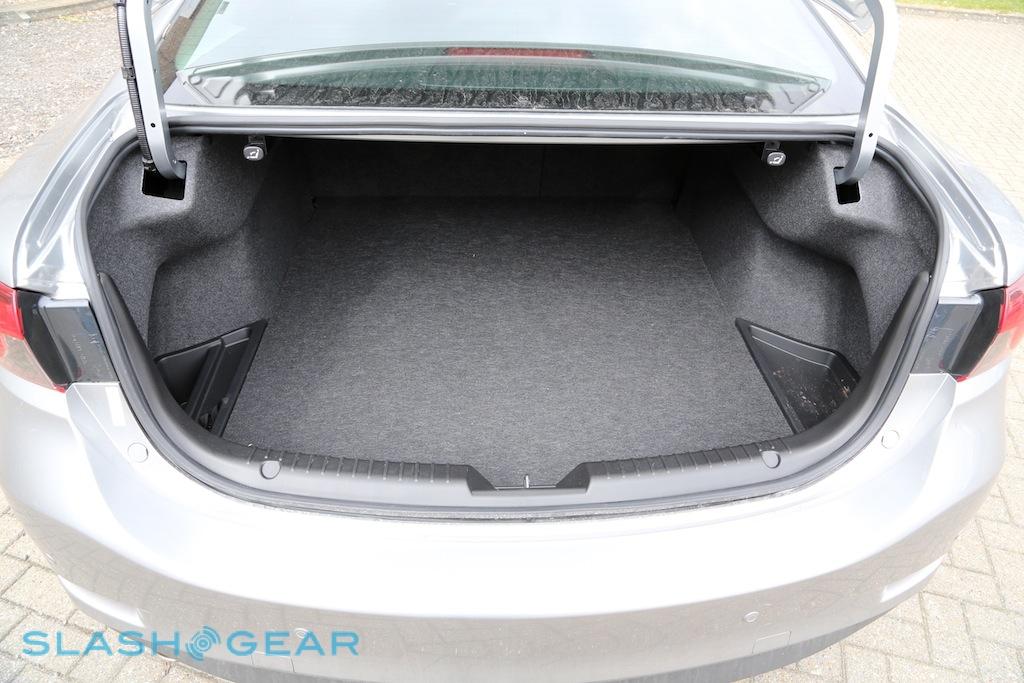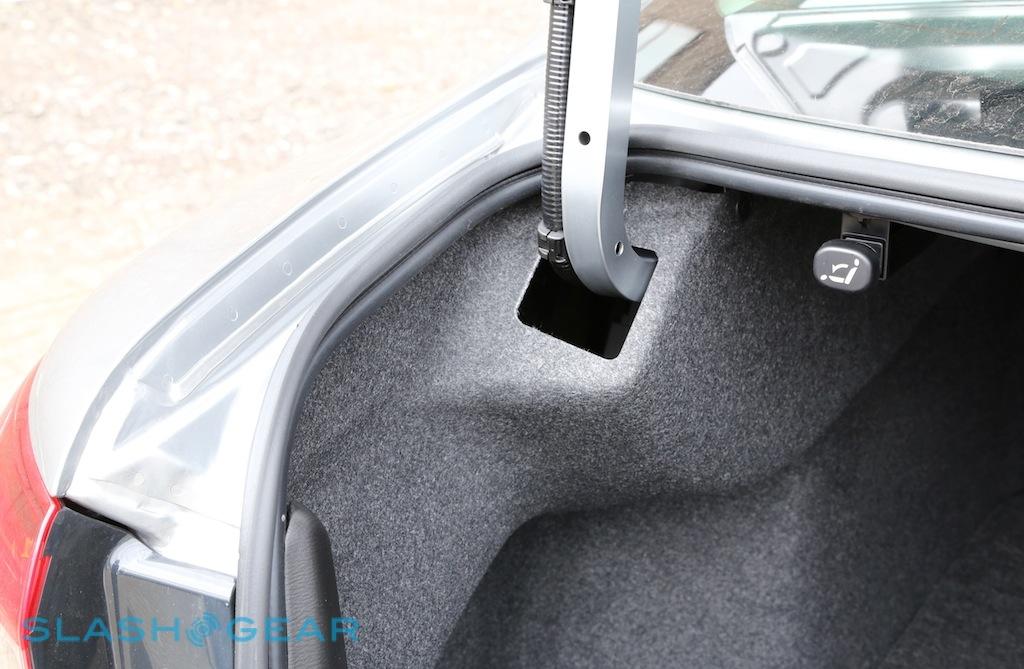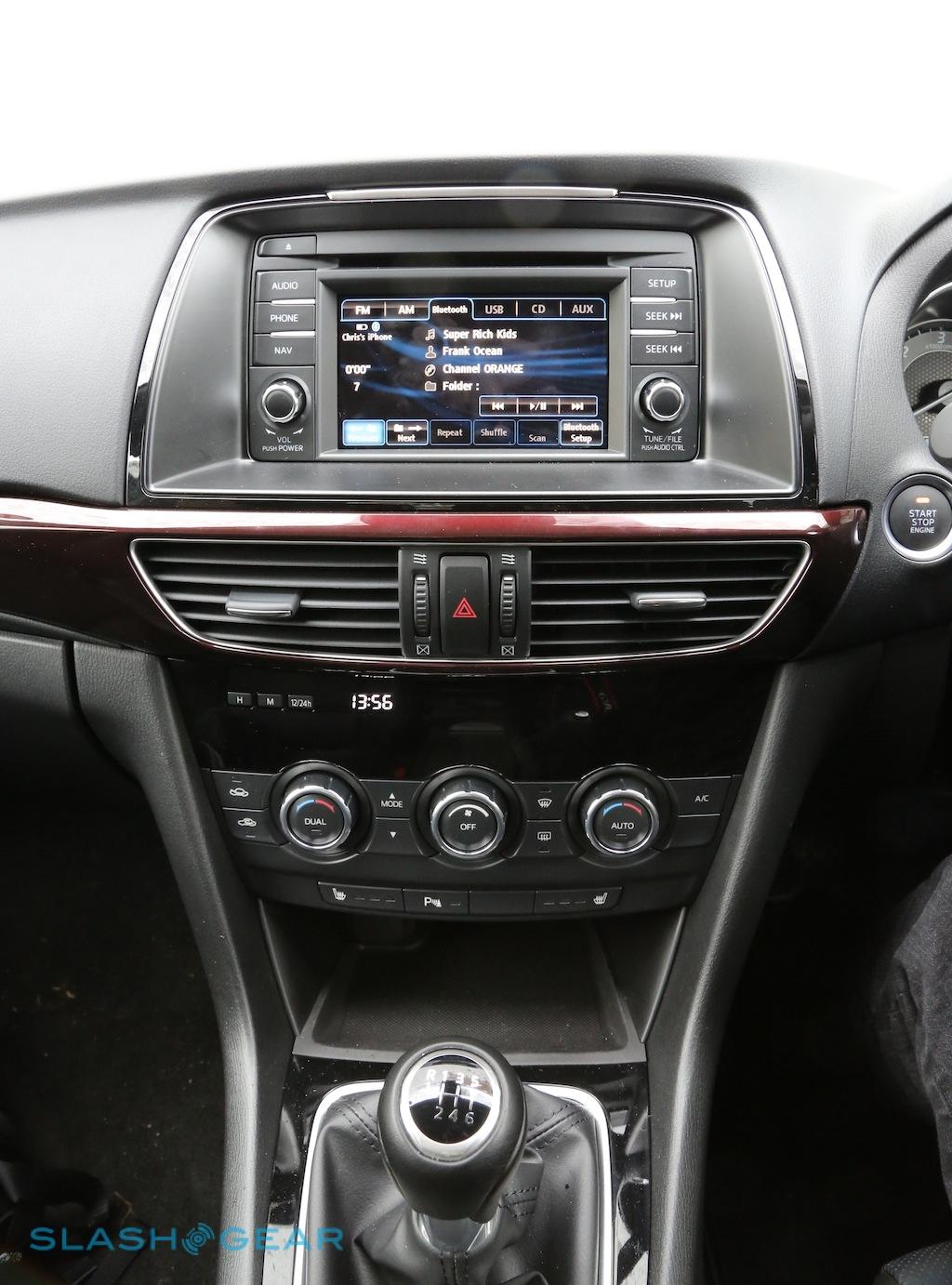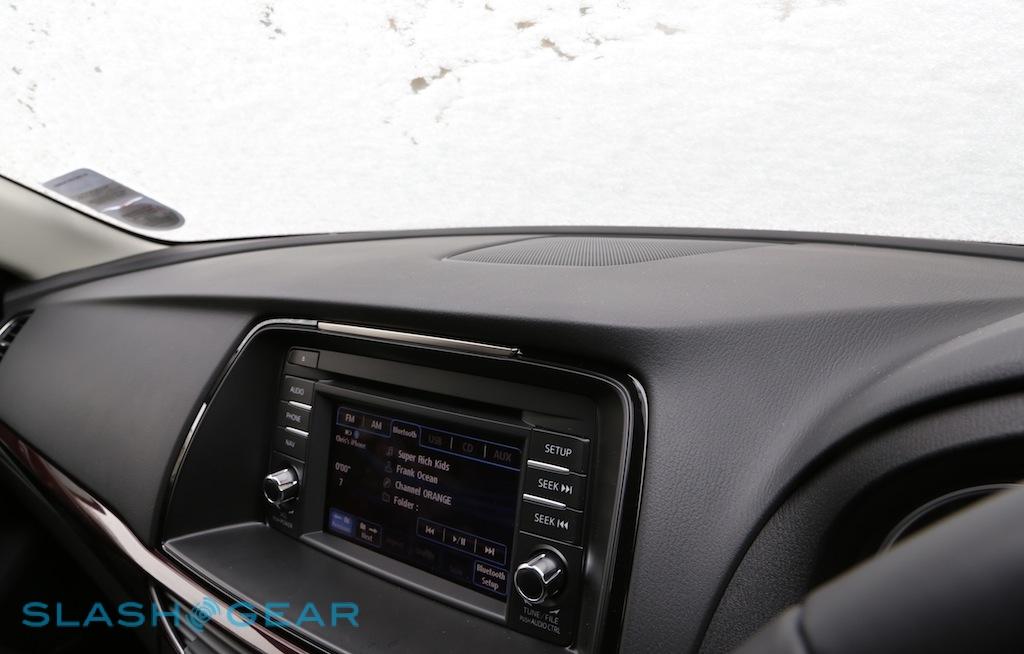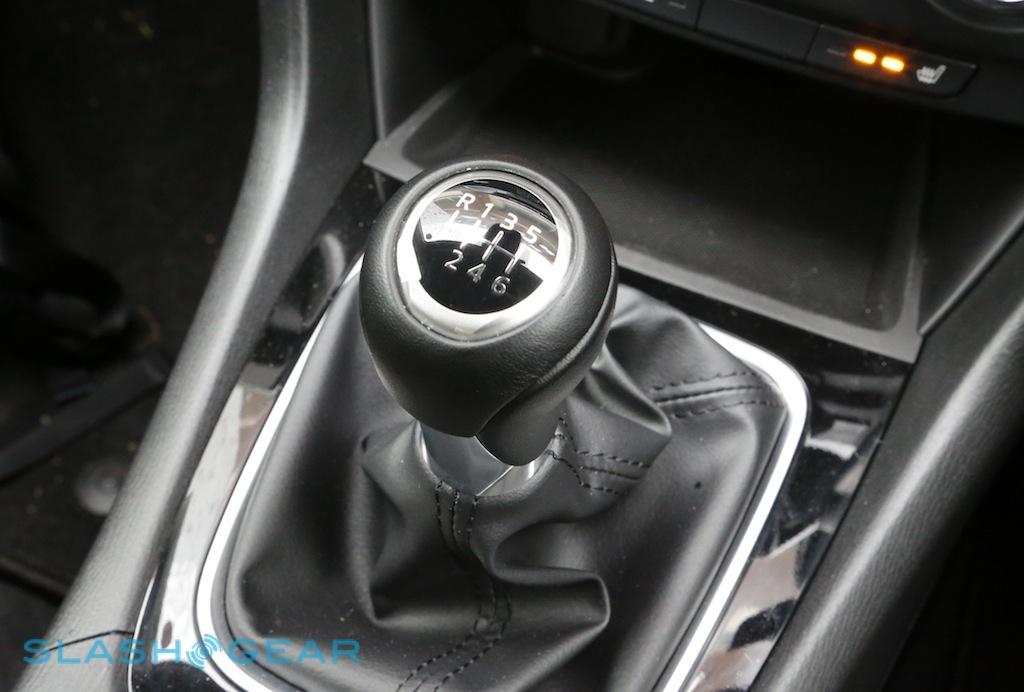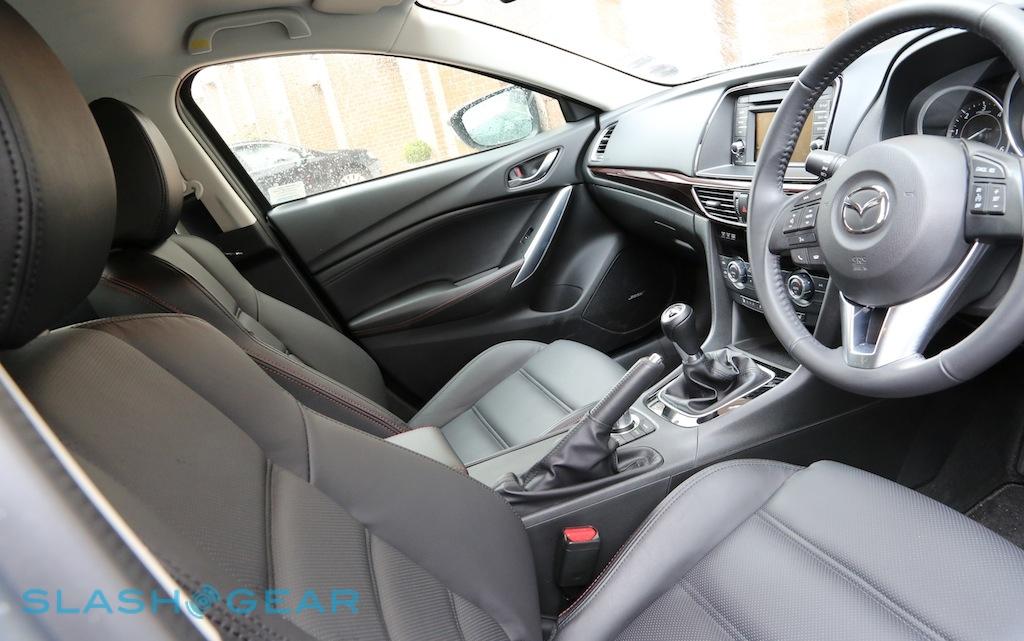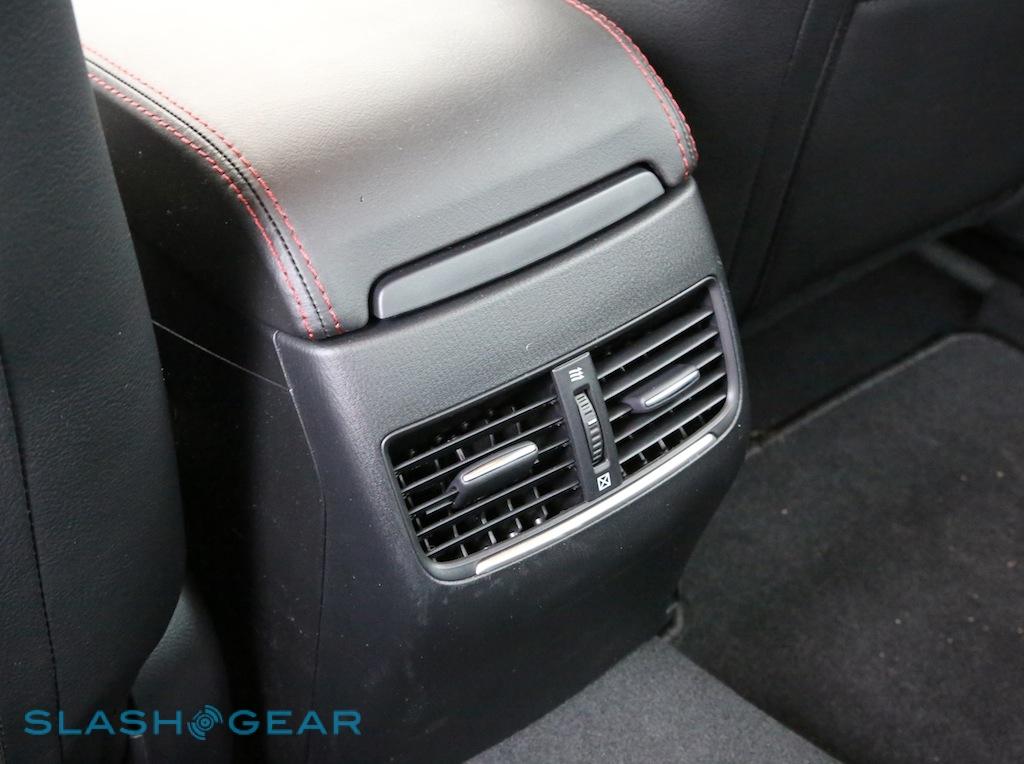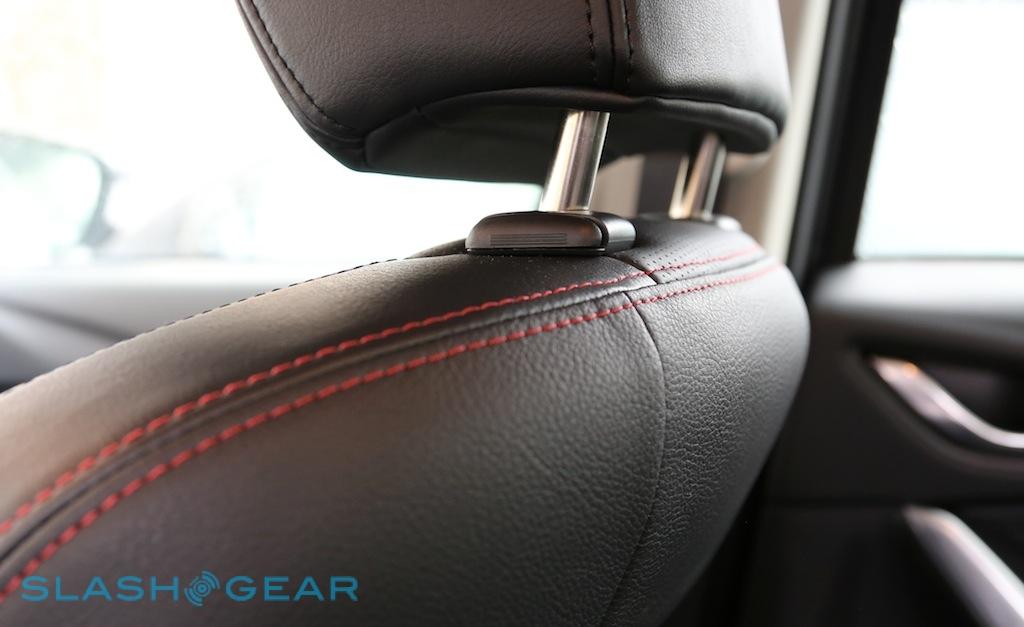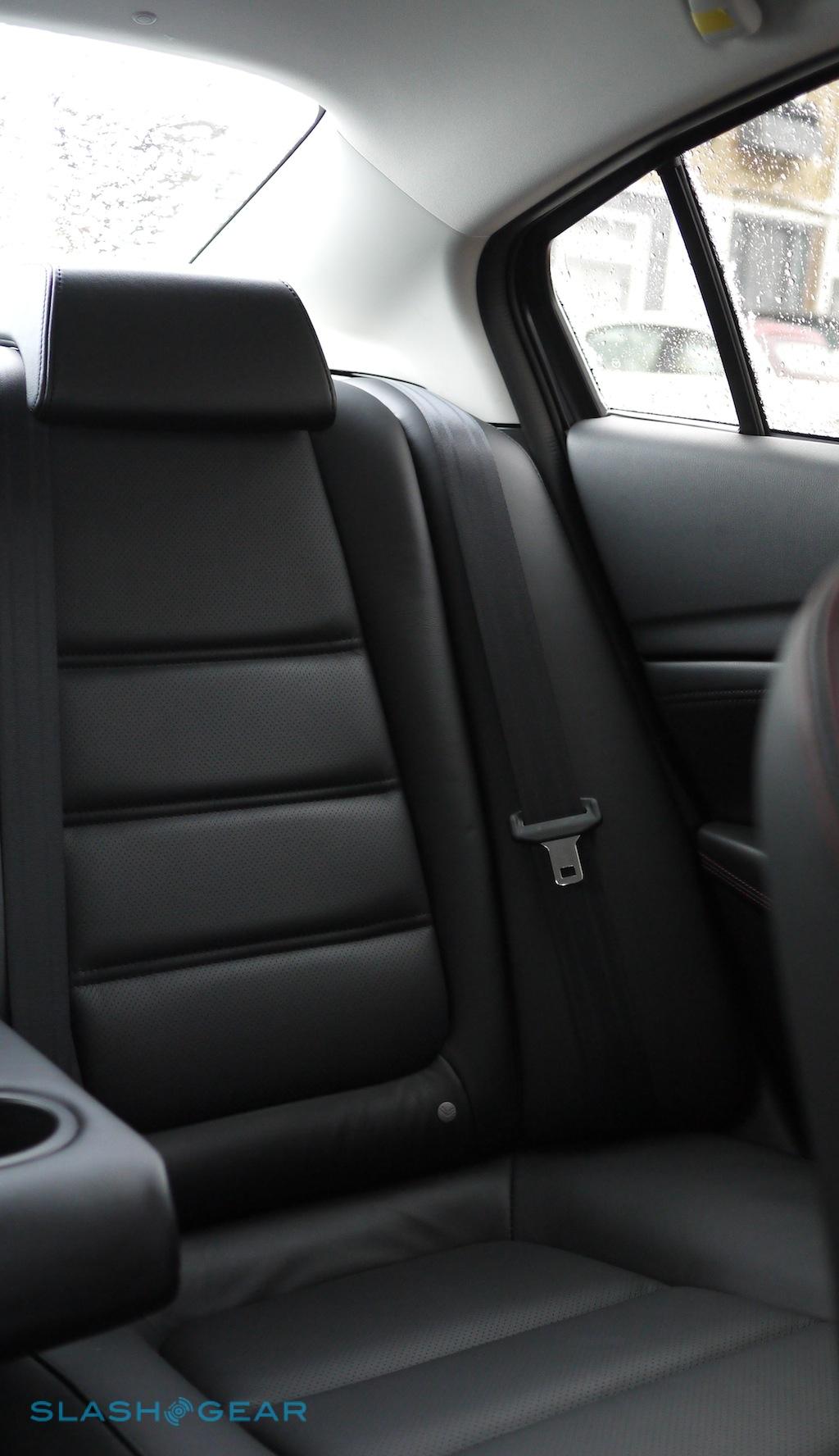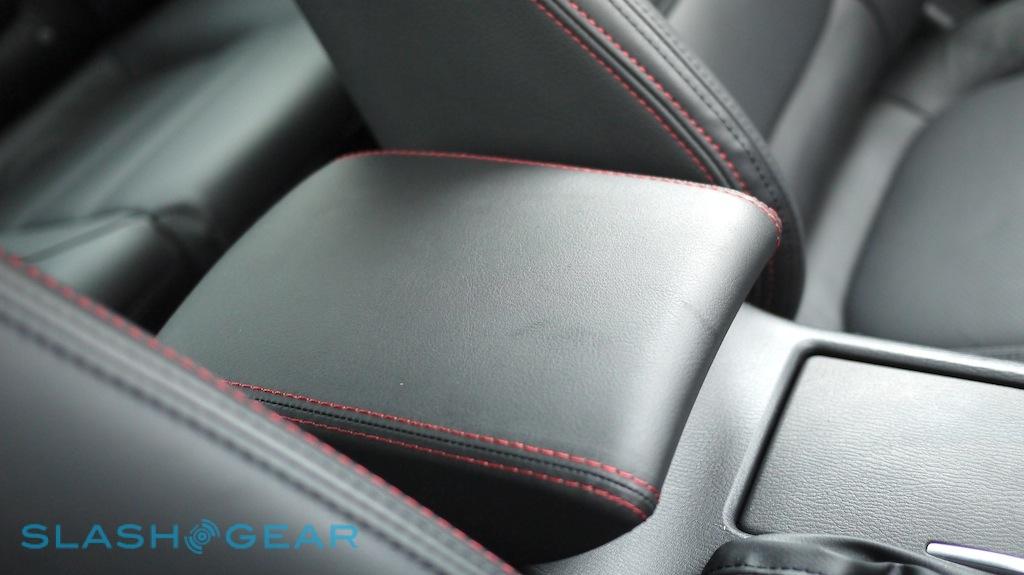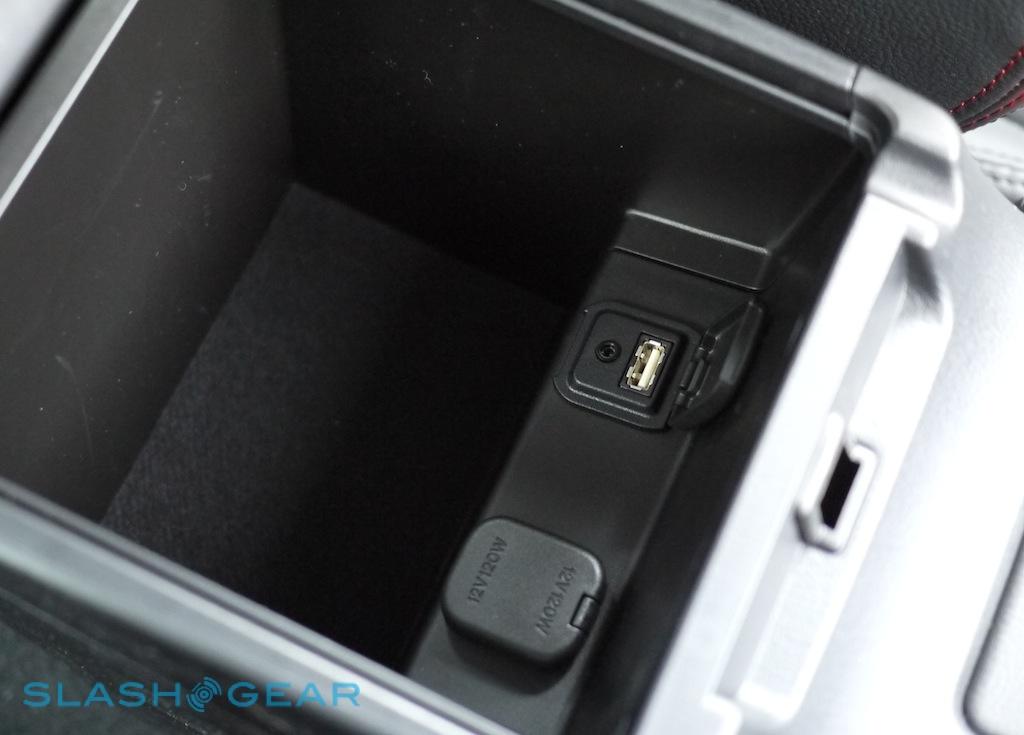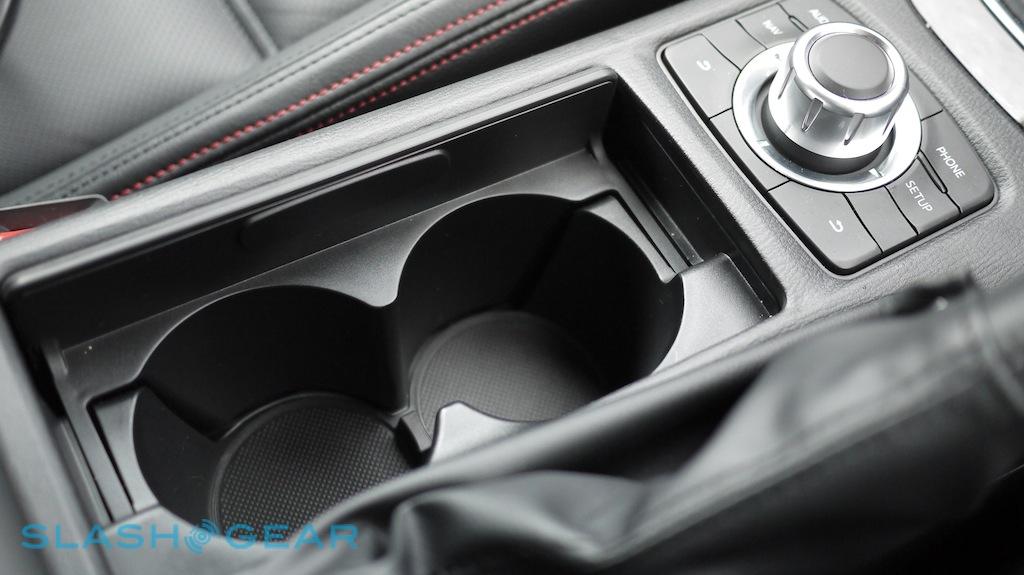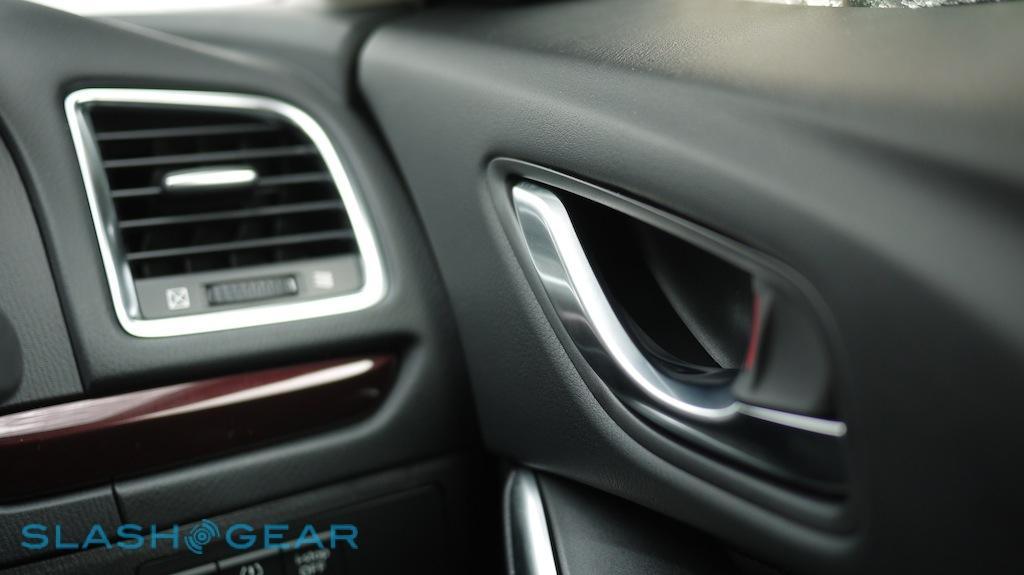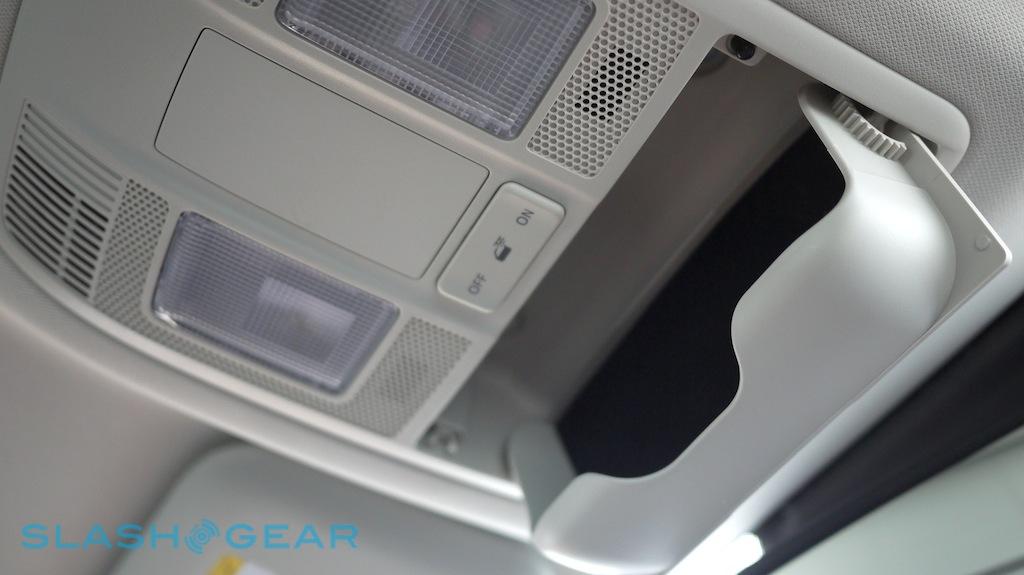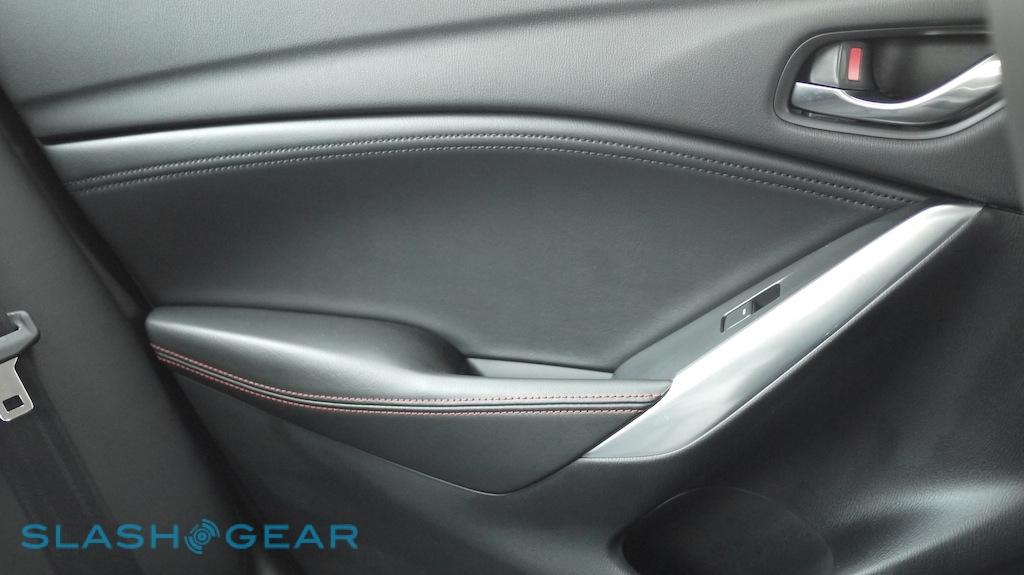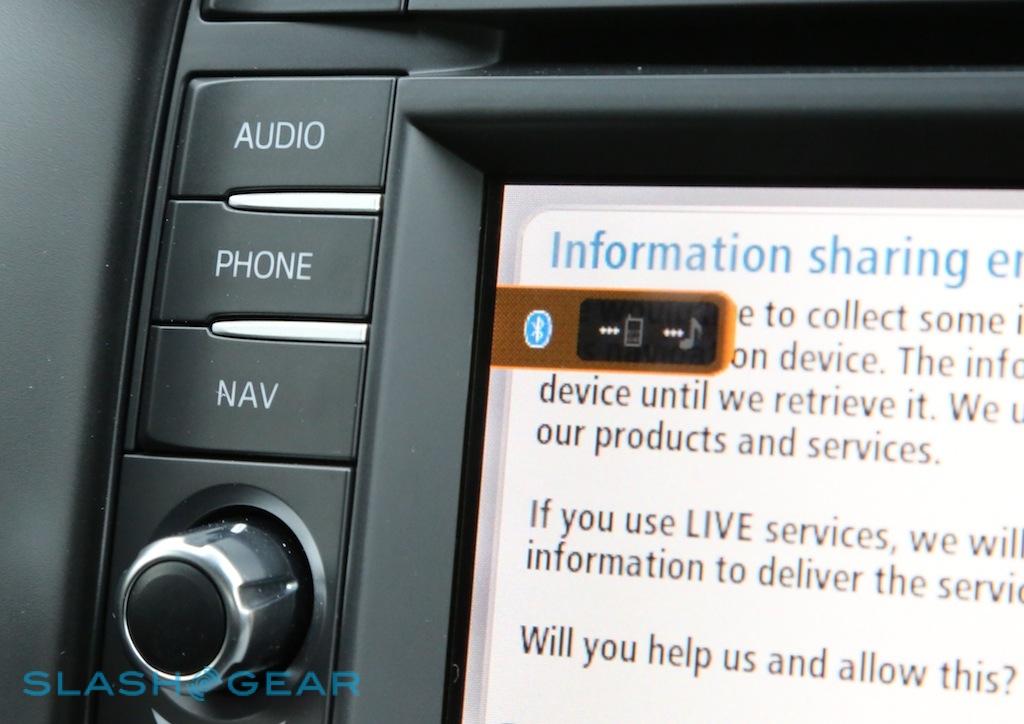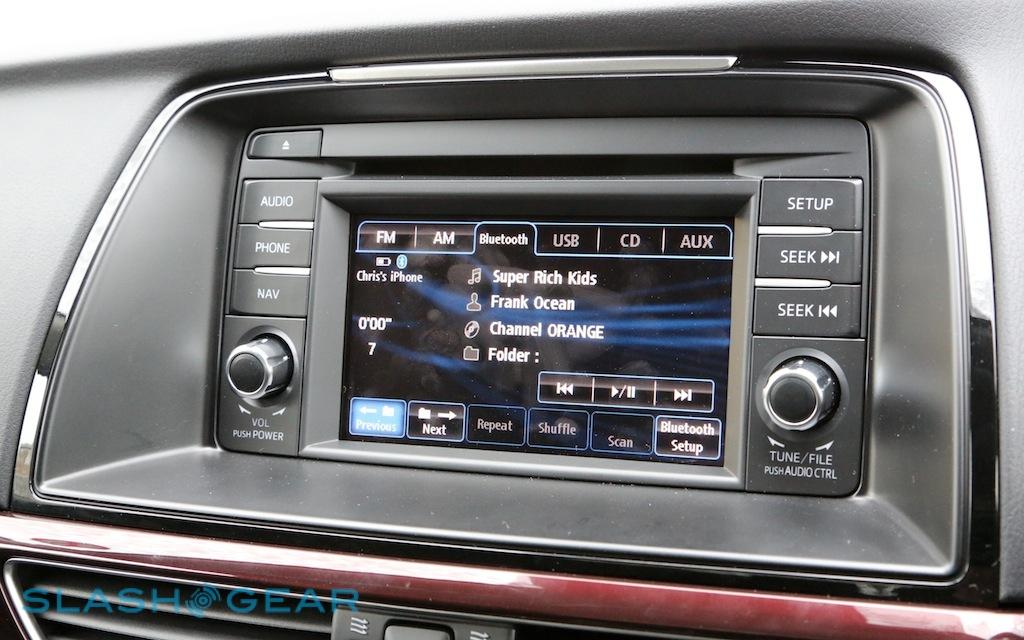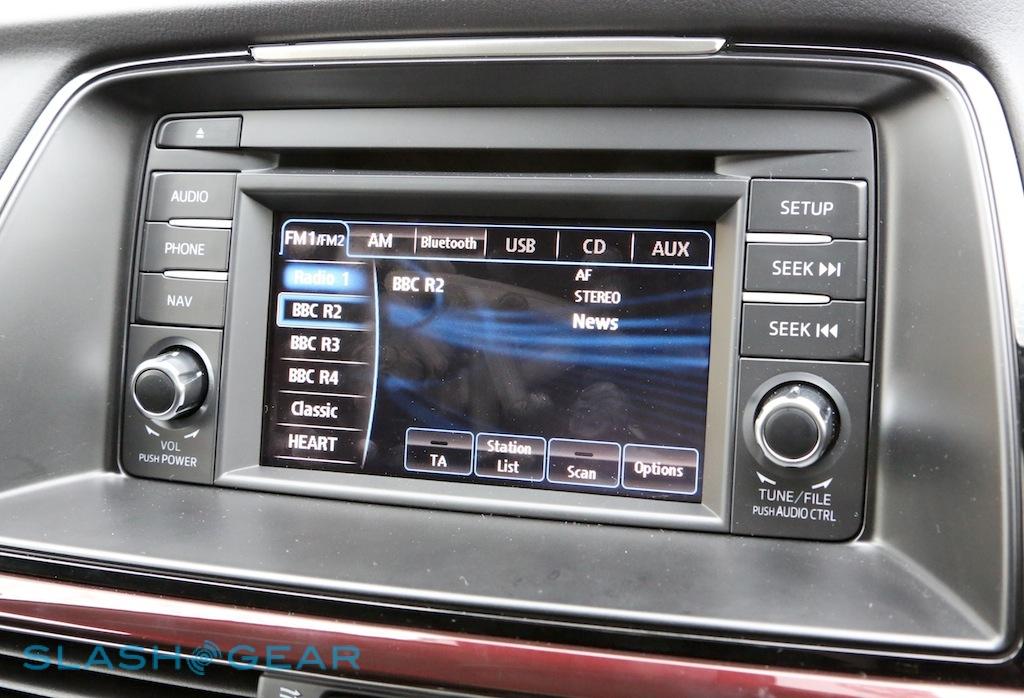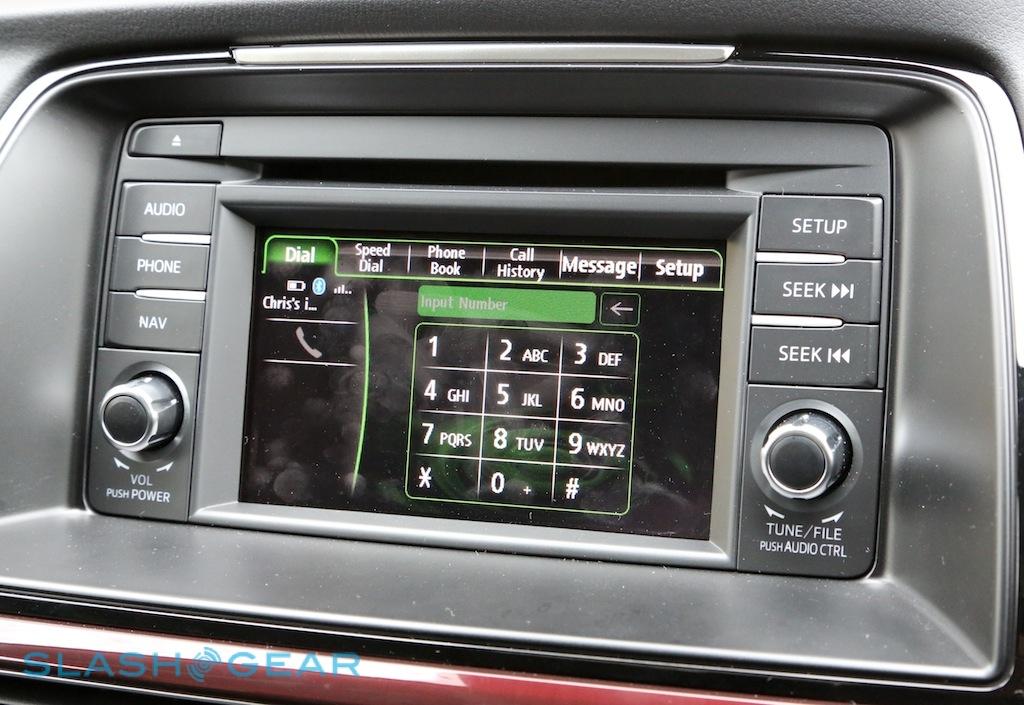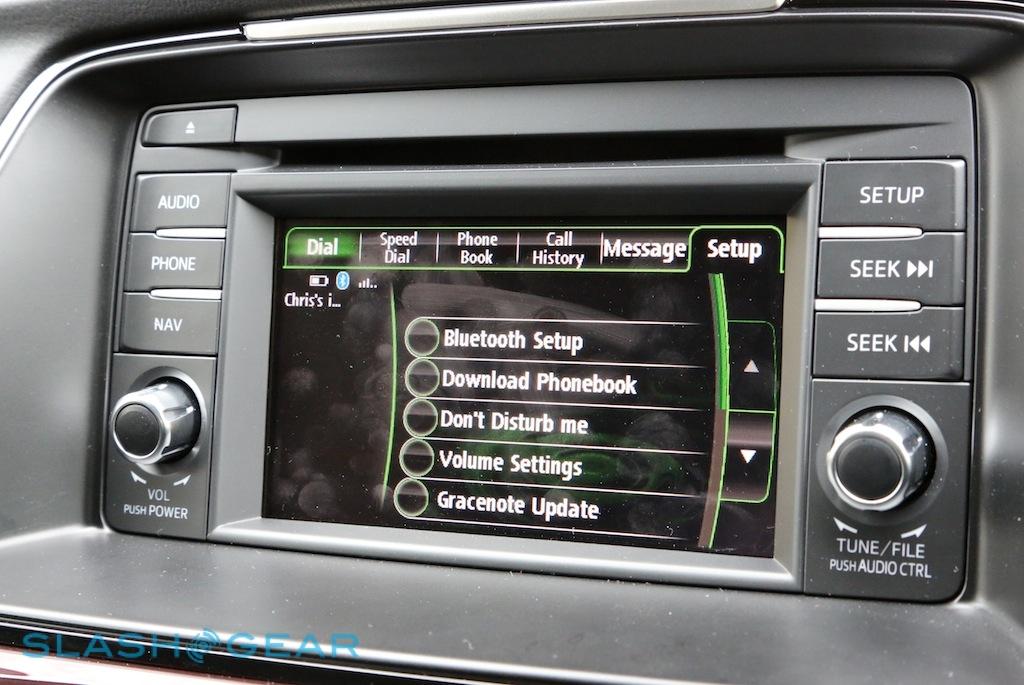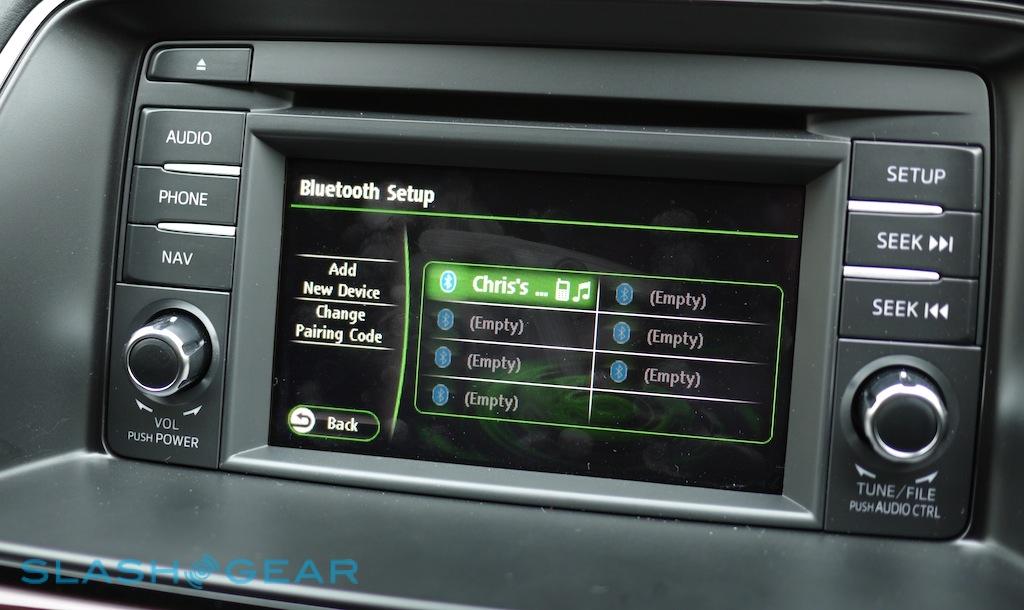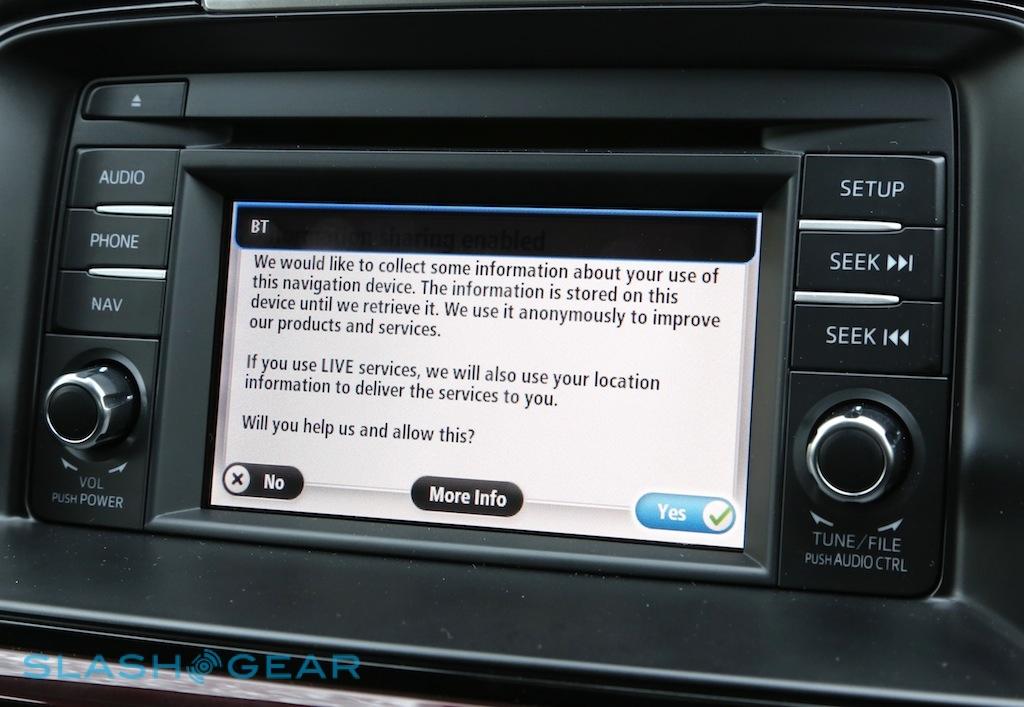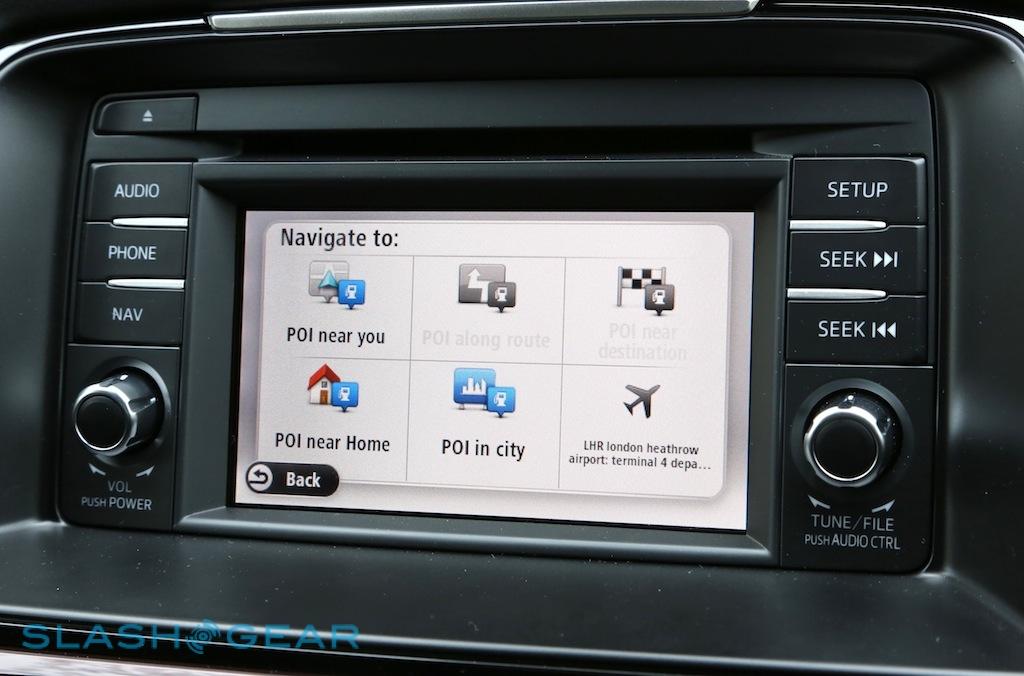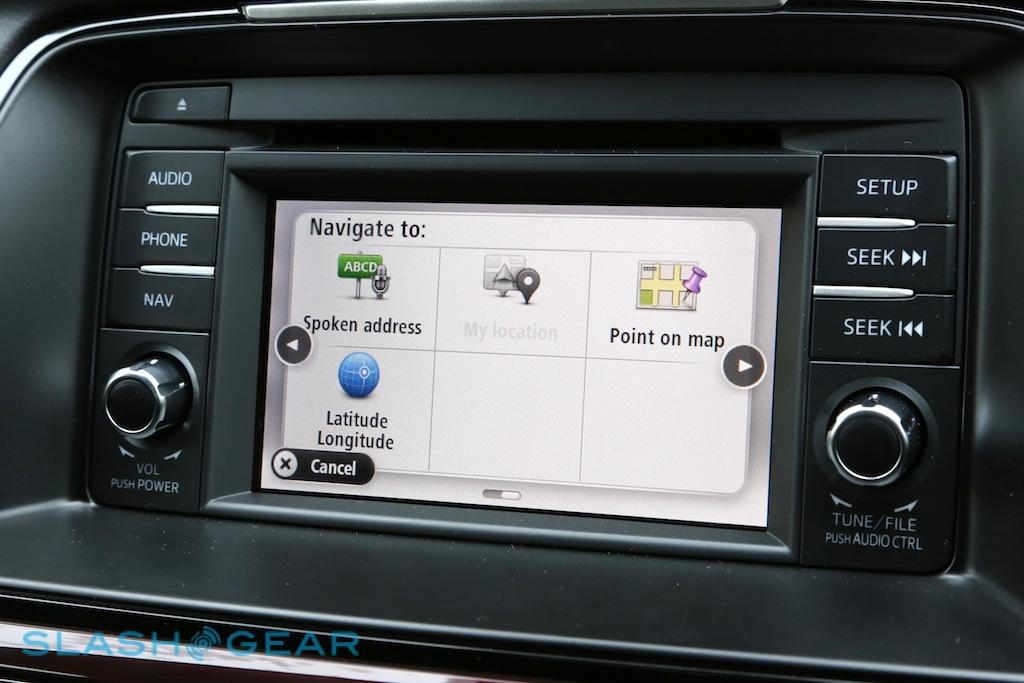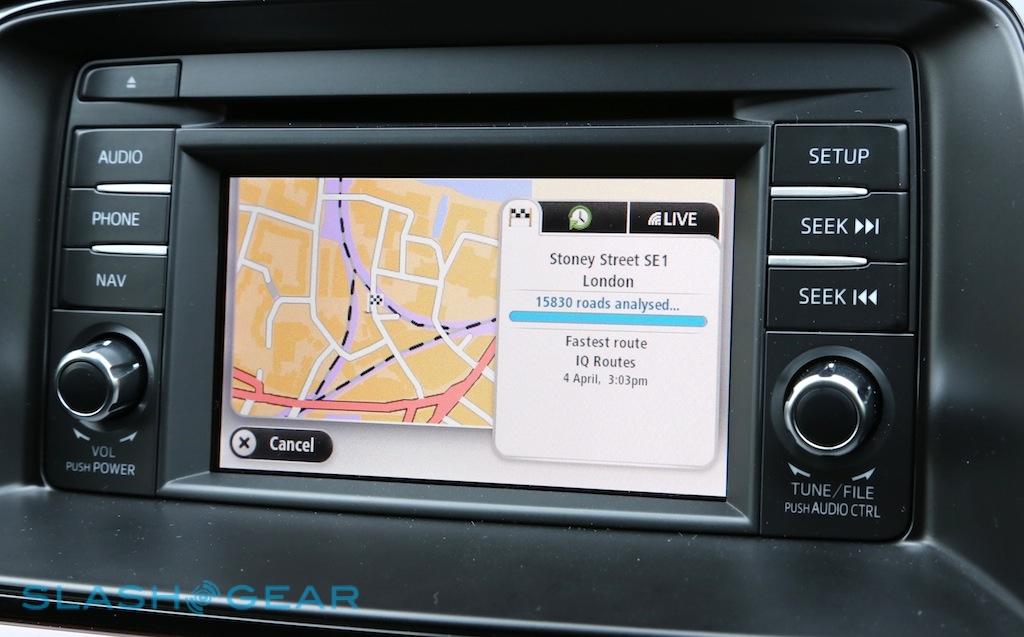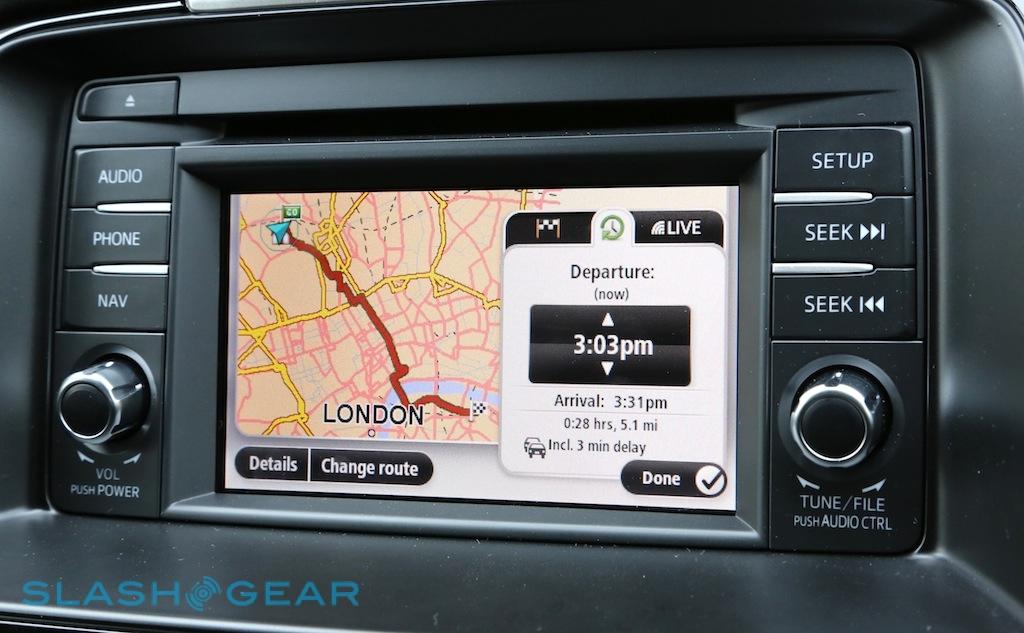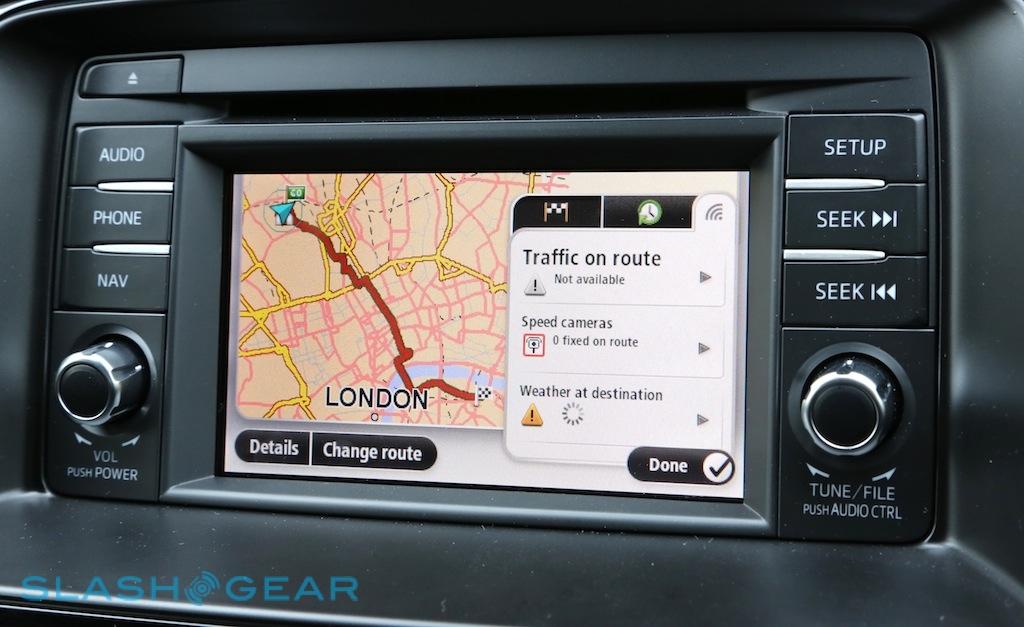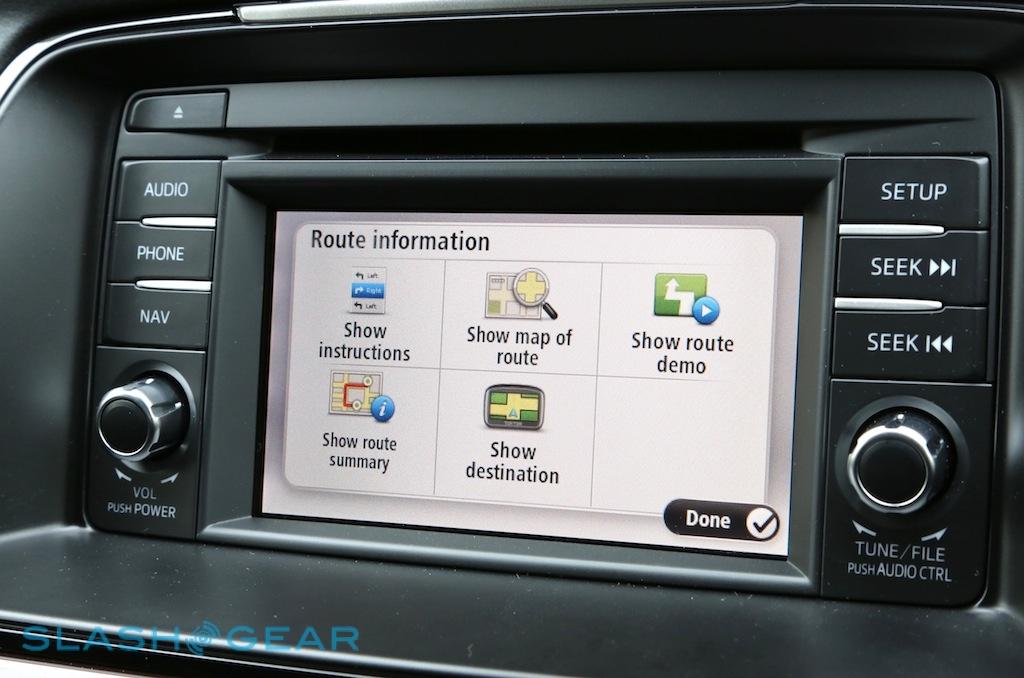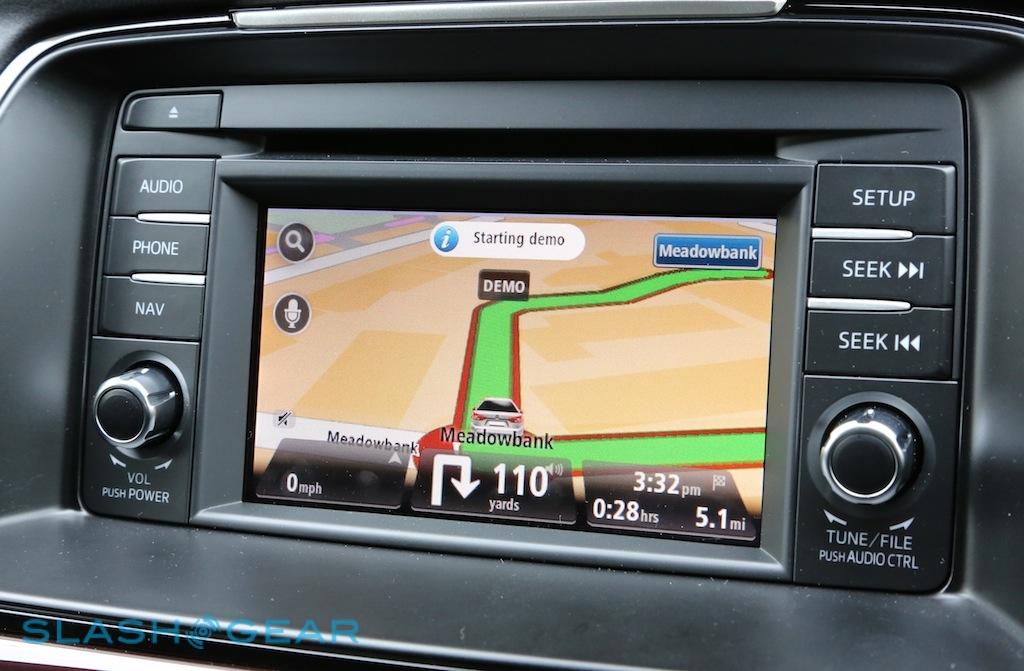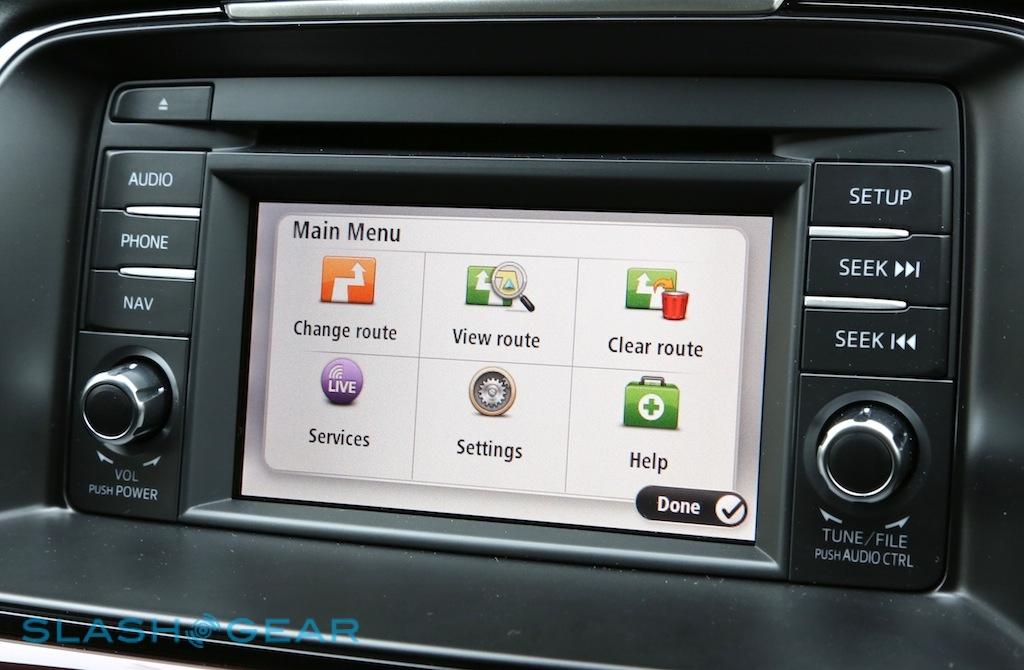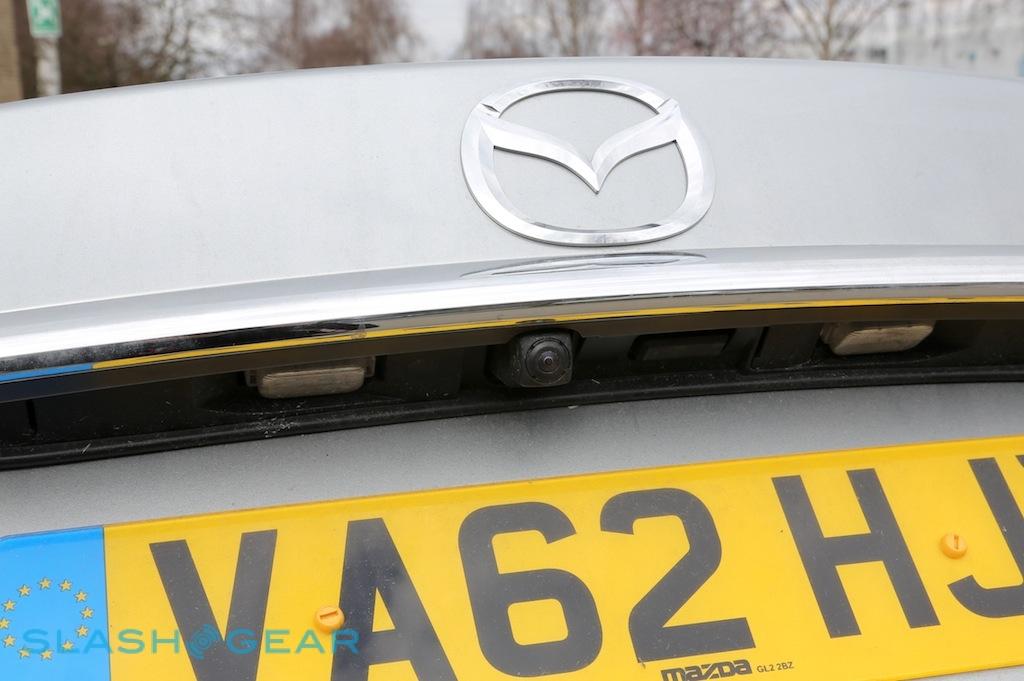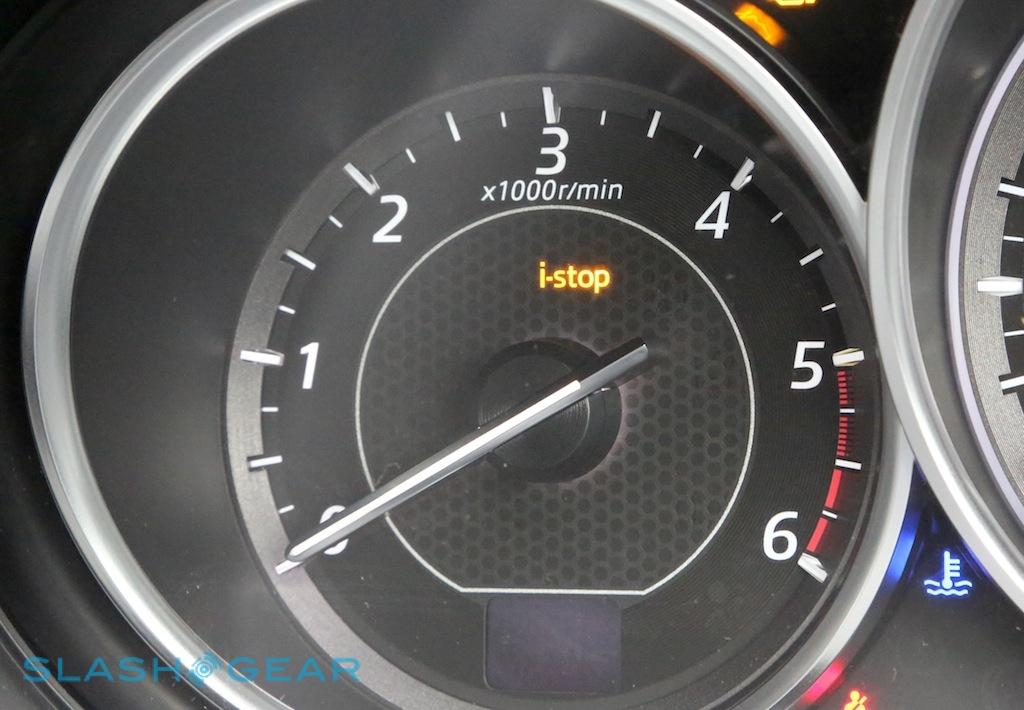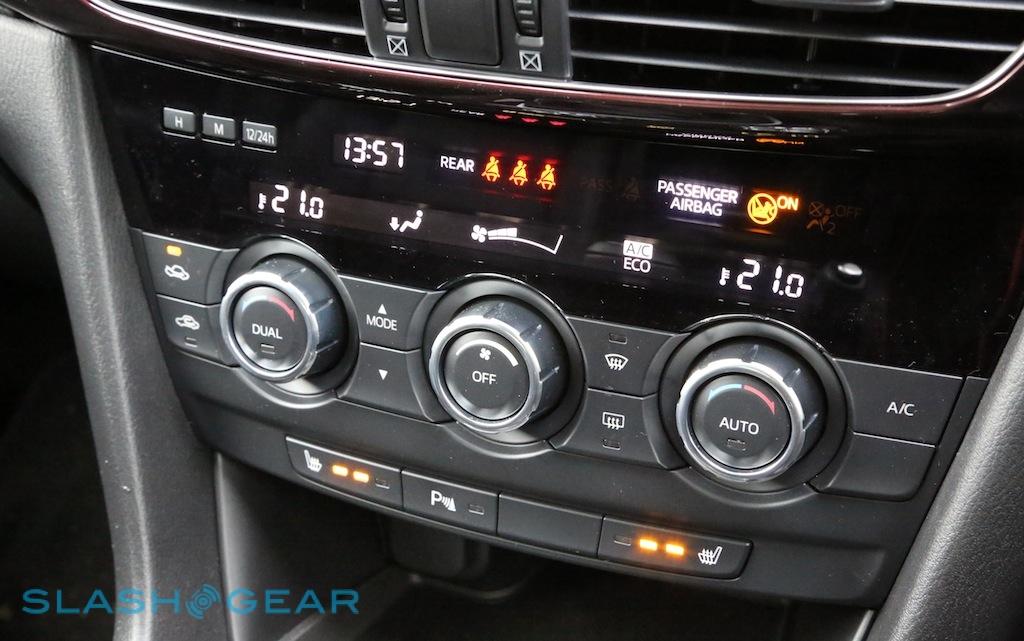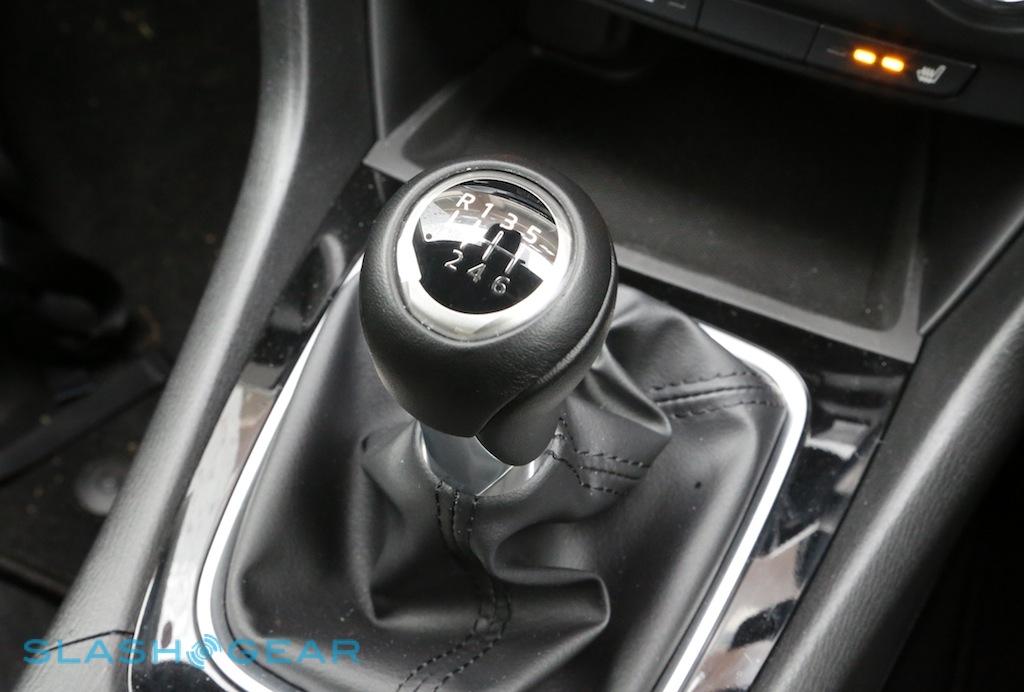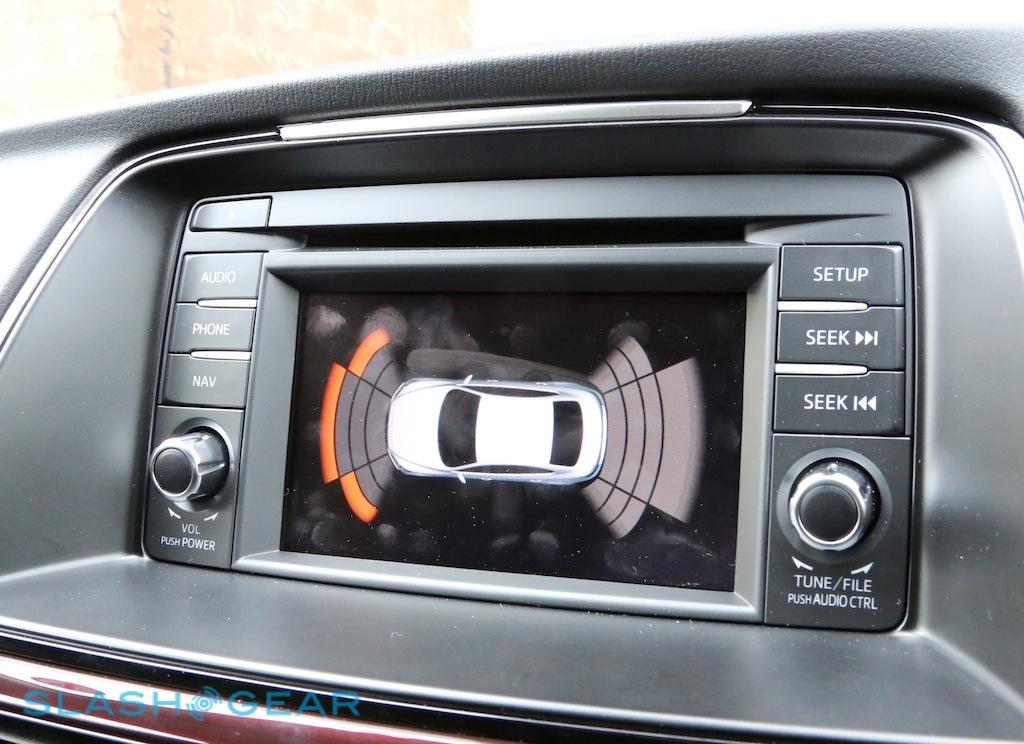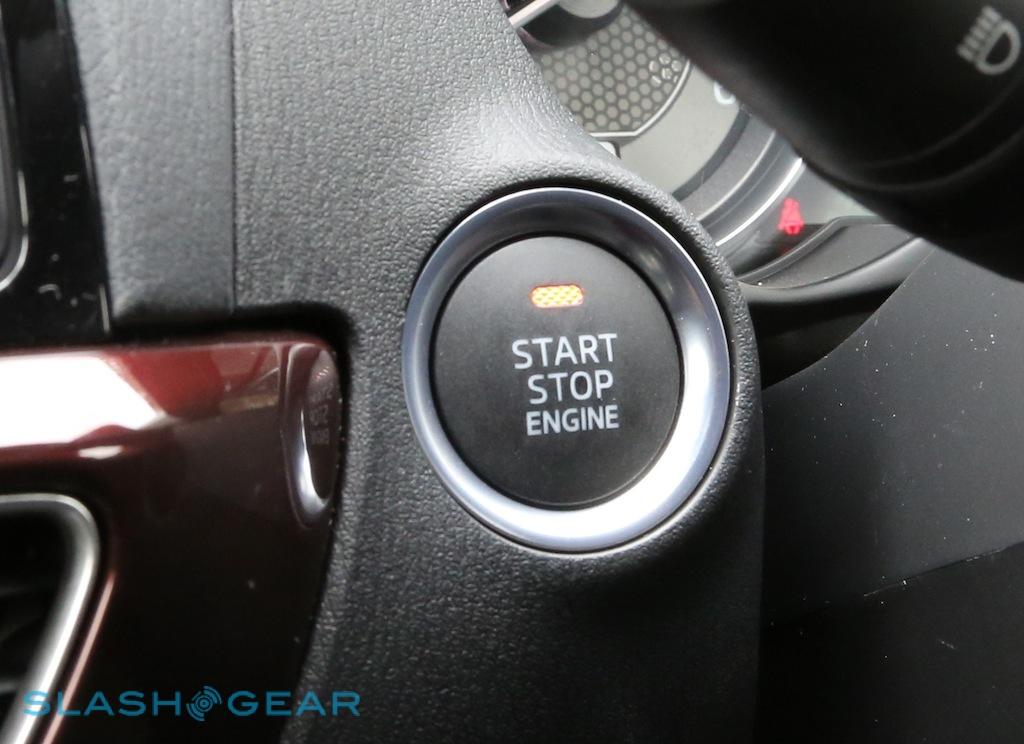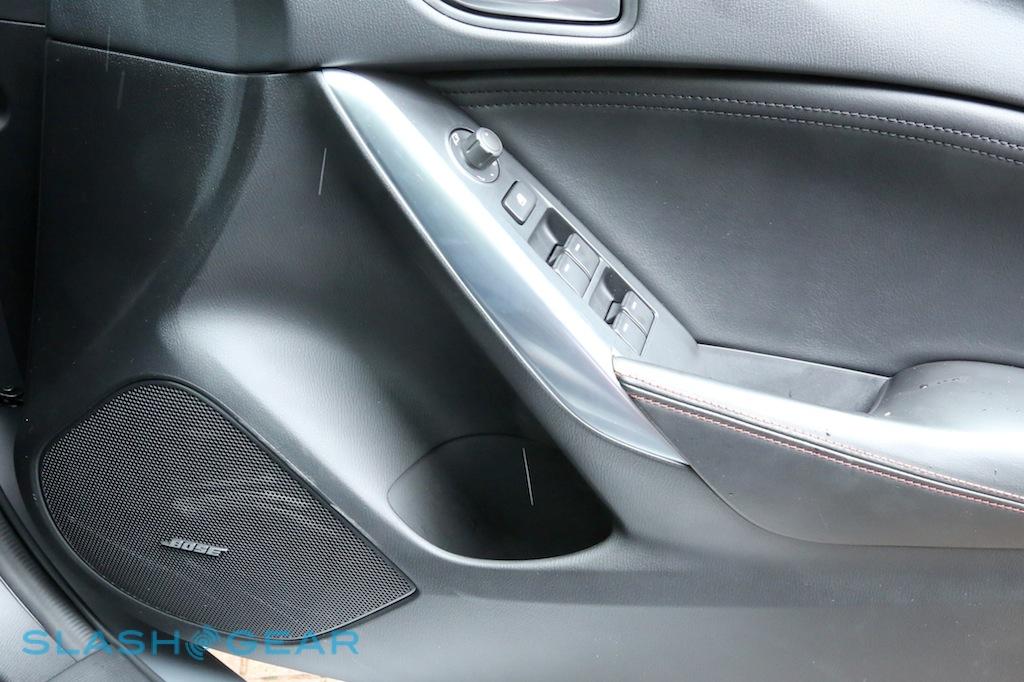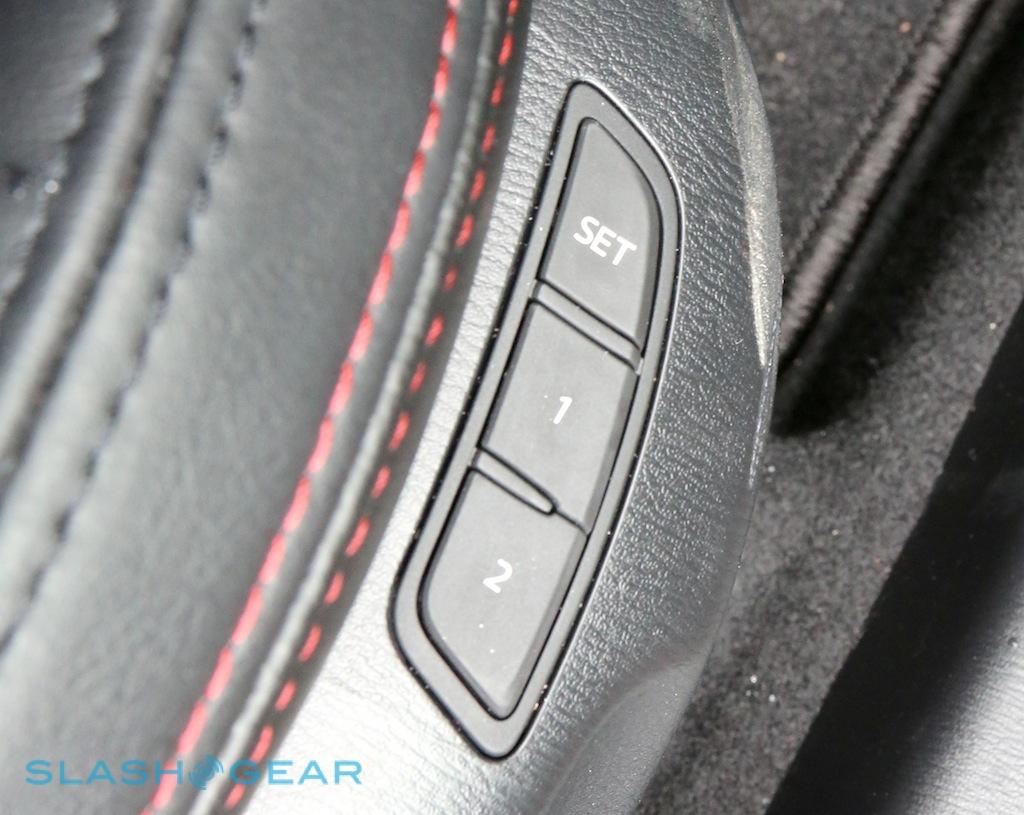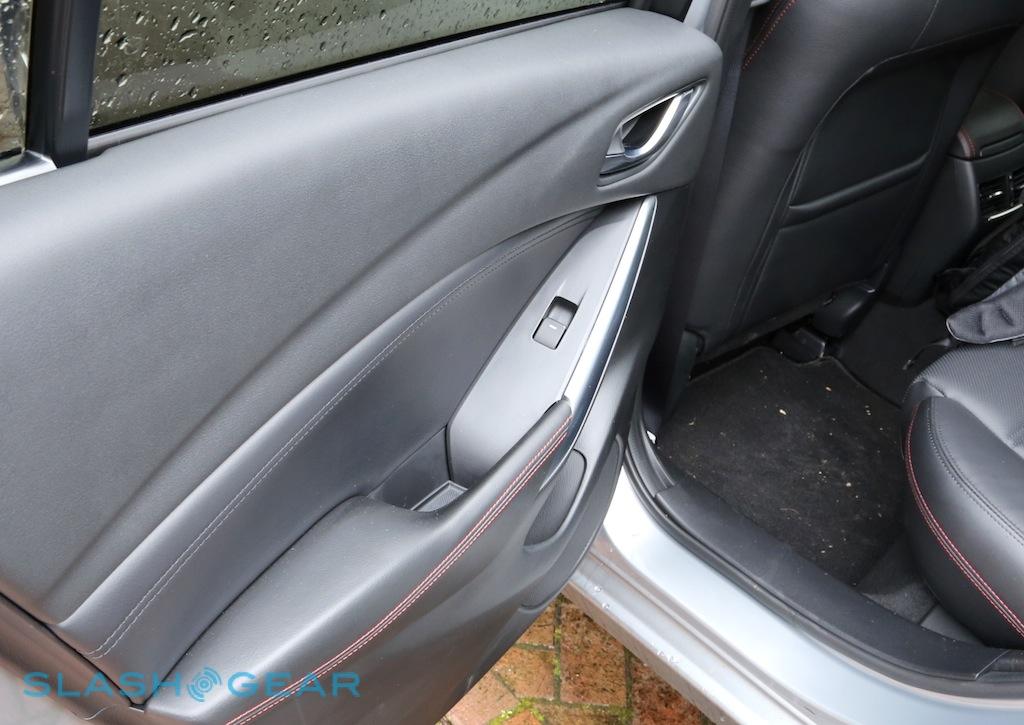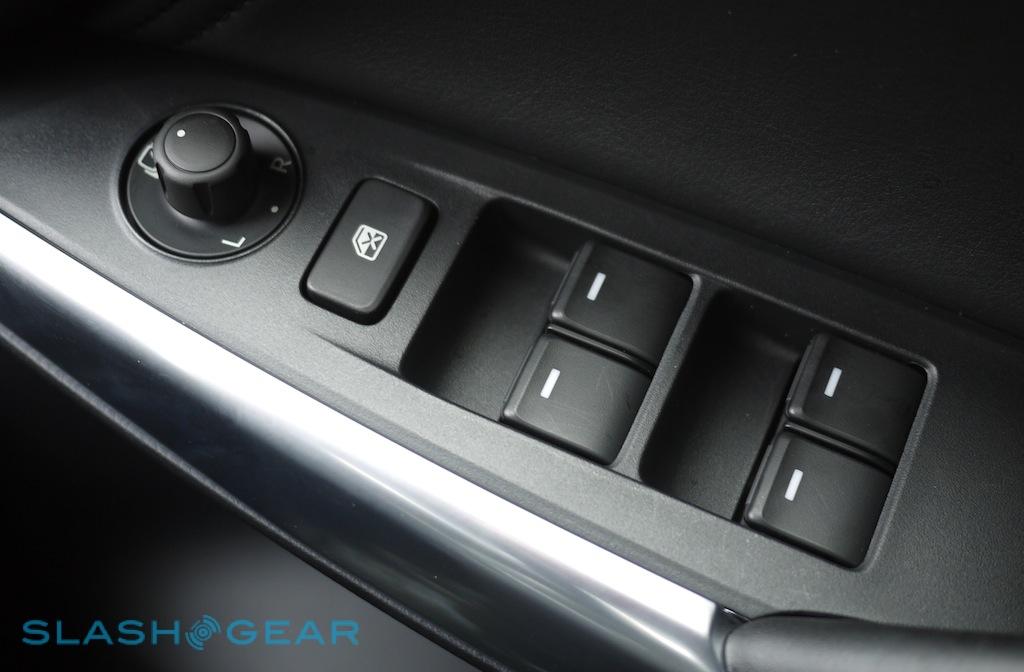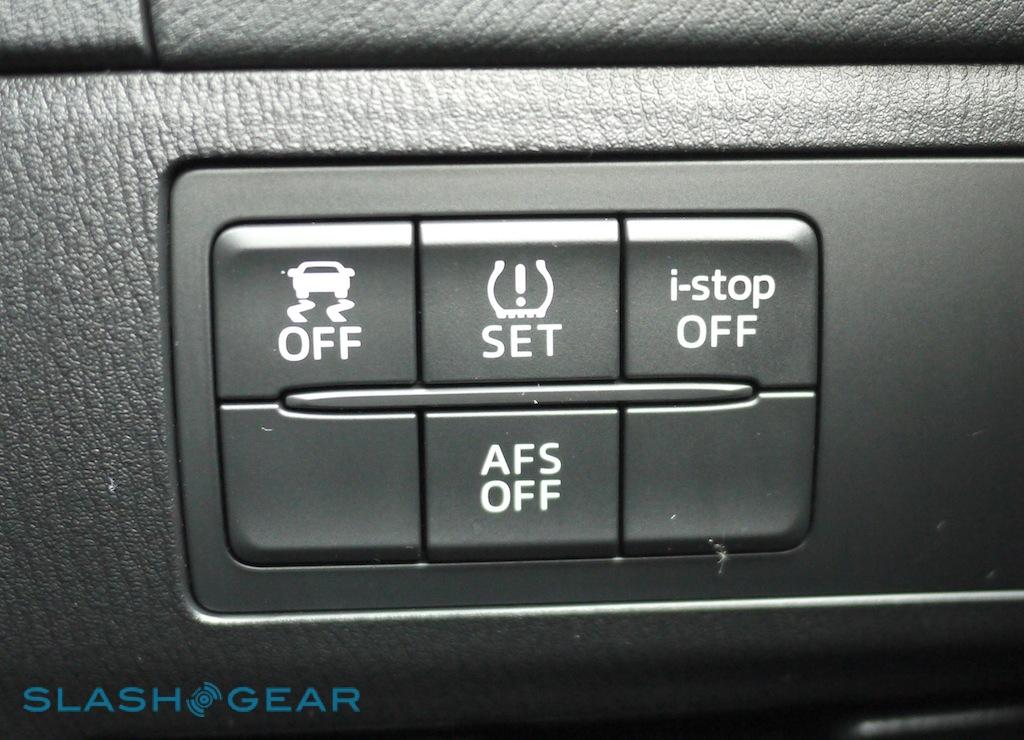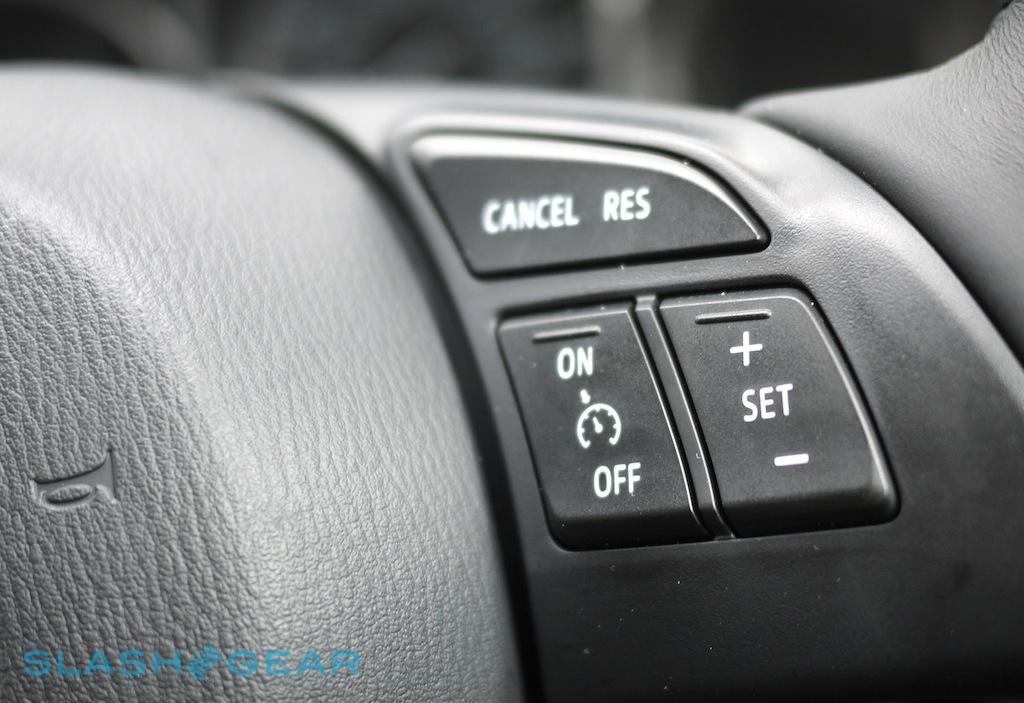Mazda6 Review
The Mazda6 is the epitome of the ugly duckling finding its unexpected swan. Anonymous in its first two generations, Mazda threw its Kodo design language at the third-gen version and ended up with one of the most distinctive four-doors around. Meanwhile, with the EV specter hanging over most car firms, Mazda remains a hybrid hold-out, maintaining there's still plenty to squeeze out of existing technology before we look to batteries. Does the Mazda6 deliver? Read on for our full review.
Design
If the old Mazda6 was a generic sedan sketched out by a child's hand, the new model is a riot of detailing. Up front, the grille has grown once more, pushing forward and deepening to give the car an aggressive, searching snout that's picked out with slips of chrome. The almond lights of the second-gen car have become tauter, more like snake's eyes, with daytime running lights running in crisp LED sweeps under the halogens.
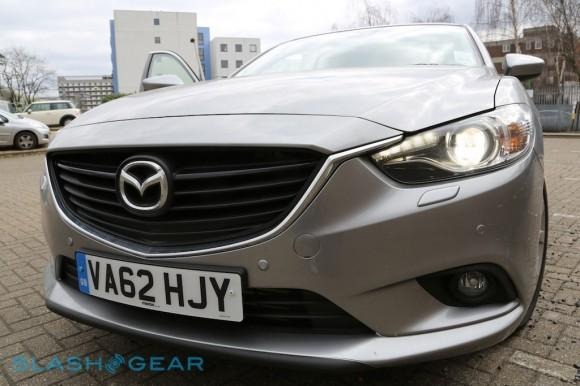
That Kodo wing, as Mazda calls it, bracketing the underside of the grille and leading into the lights, begins the haunch-line of the car, which starts with muscular wheel arches at the front and then slides into a twin-creased side line that ends at the slightly tapered rear. As the first of those creases dips into the rear door, the shoulder line rises to notch away the side glass, the rear windows of which are smoked as standard on all but the entry-level cars.
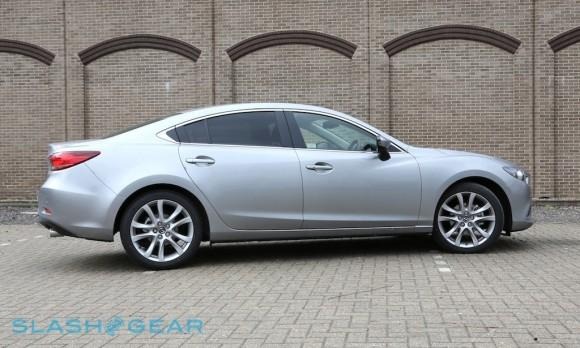
Finally, there's another chrome whisker across the trunk, with the rear light clusters deeply set into the bodywork, and an integral lip-spoiler in the lid. It looks particularly good from the front or rear three-quarters, where Mazda's sweeping movement lines along the sides have a touch of the Infiniti or Jaguar about them. Although the effect is most impressive on the four-door, Mazda's 5-door load-carrier, the Mazda6 Tourer manages to look distinctive too, pulling the rear side glass out to end in a crease of chrome trim, while the falling roof line and angled back glass make for a car that's still sporty in appearance, albeit sacrificing a little internal space in the process.
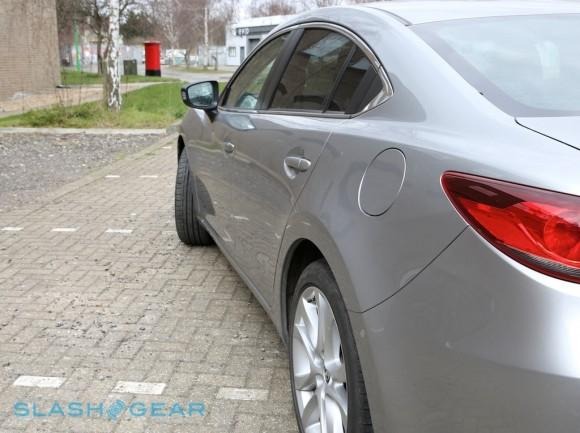
Mazda fits 17-inch alloy wheels as standard, though the Sport model – as we had on test – gets 19-inch versions with twisted spokes. Similarly there are front fogs standard across the range, part of an ambitious package of no-cost perks that belie the sticker price. The daytime running lights are standard, as are the halogens and heated door mirrors; our Sport model threw in bi-Xenon headlights and power mirrors, among other things.
Engines and Performance
Four engines are on offer in the UK, split between petrol and diesel, with a choice of 6-speed manual or auto transmissions. The entry-level Mazda6 SE has a choice of 2.0l 145ps petrol or 2.2l 150ps diesel, both manual; if you want the auto box options on those you need to step up to the SE-L. At the top is the Mazda6 Sport, with a choice of four combinations: either the 2.0l 165ps manual, the 2.2l 150ps diesel manual, the 2.2l 175ps diesel manual, or the 2.2l 175ps diesel automatic.
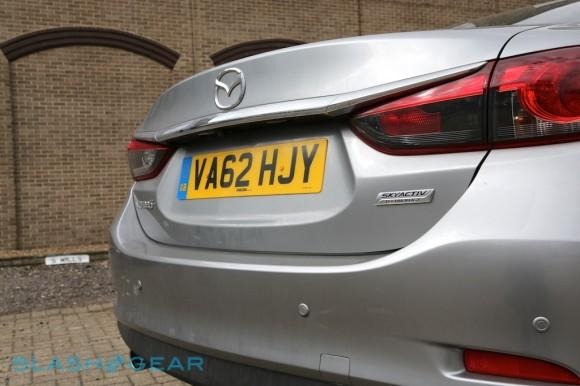
The US, however, only gets a single engine option: a 2.5l 184HP petrol offered with either the 6-speed manual or automatic gearboxes. The manual is rated for 25mpg (US) in the city or 37mpg (US) on the highway; the auto transmission bumps both of those by a point. Only the Sport sedan is offered of the four-doors, though there's also the Touring and the Grand Touring (the latter adding in some extras as standard); since we tested a UK car, we haven't tried the US-specific engine.
As you might expect, the 2.0l 165ps petrol manual in the Sport version is the most instantly aggressive. Mazda quotes a 9.1s 0-62mph time and a top speed of 134mph, and though the car is among the largest in its class – 4.87m long and 1.84m wide for the four-door – there's more high-tensile steel and other lightweight materials used inside to keep the heft down.
Mazda calls all this fettling SKYACTIV, launching it in the CX-5 SUV, and indeed the Mazda6 builds on the same MacPherson struts and multilink rear suspension, putting its power down through the front wheels. It's not an MX-5, certainly, but neither does it wallow or slump around corners, and even in the Tourer model it's possible to forget there are three seats and a decent scale load area behind you as you tackle corners with alacrity.
It's the diesel engines that suit the car most, however, the 2.2l 175ps manual we spent most time with pitching its mid-range torque right into the sweet spot for overtaking at speed in fifth gear, as well as dawdling through city traffic in fourth. While diesels may traditionally lack some of the upfront verve of their gas counterparts, in actual fact the 2.2l in the Mazda6 shaves the 0-62mph dash down to just 7.9s. Even the under-tuned 150ps version does it 0.1s faster than the slightly more powerful petrol plant. In practice, of course, this is a sizable car intended for more sensible use, but it's hard not to be impressed by the degree of enthusiasm the big Mazda can muster.
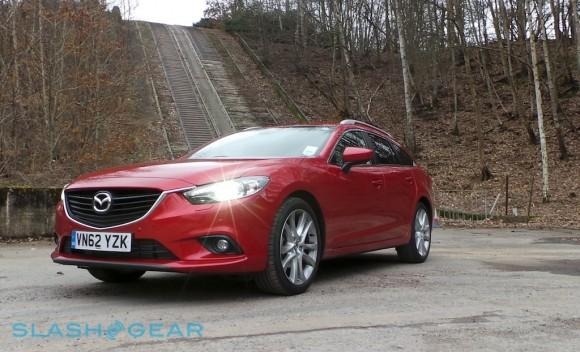
One thing you won't find on the options sheet is a hybrid powerplant. Mazda tells us it still isn't convinced that big batteries and electric motors are the way forward for eco-friendly cars, looking instead to engine refinement with a few tech sprinkles to keep things competitive. So, the big diesel is rated for up to 62mpg (Euro) combined – we saw a consistent 44mpg (Euro) in mixed driving from the manual version, topping out in the mid-50s on extended trips – with 119 g/km of CO2 emissions. The top-spec petrol version is more thirsty, with a quoted 47.9mpg (Euro) combined consumption and 135 g/km CO2. Opt for the smallest diesel, though, and you can trim CO2 output to an impressively meager 108 g/km.
Even though Mazda has bypassed big batteries, that's not to say there aren't some small ones inside the Mazda6. i-ELOOP addresses an issue most drivers probably don't even realize is there: the cost on engine power required to drive all a car's electronics. The audio system, HVAC, power steering and such are usually run off an alternator clamped to the engine, sapping anything up to 10-percent of its output; with i-ELOOP, the same regenerative braking principles hybrids use to convert shedding speed to battery power is turned, in the Mazda6, into a temporary source for the car's electronics.
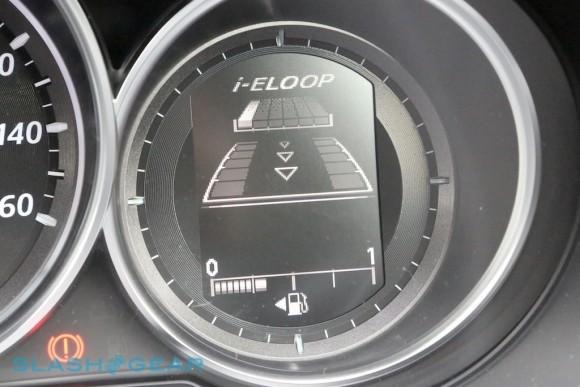
It's actually a big capacitor, not a battery, but in practice it's basically transparent to the driver (unless you cycle through to the relevant graphic in the instrument binnacle). As you decelerate, the i-ELOOP system is charged up; it can then run the electrics for around a minute, good for what Mazda claims is around a 10-percent boost in fuel economy overall. It works in hand with Mazda's i-stop automatic engine shut-down, which temporarily cuts off the engine while you're paused in traffic, but keeps the music playing and the climate control blowing without draining your regular battery.
Interior
Mazda's track record in making sports car interiors puts the driver in the right place in the Mazda6, particularly in the leather-clad environs of the Sport model (SE and SE-L make do with cloth seats as standard), though it's not the most imaginative dashboard we've sat behind. The sat-nav touchscreen sits on top of the HVAC controls, the stack broken up with a swathe line – thankfully not fake wood – studded with vents, and all the controls feel sturdy and resilient, but there's not much in the way of excitement or superlative-design to be found.
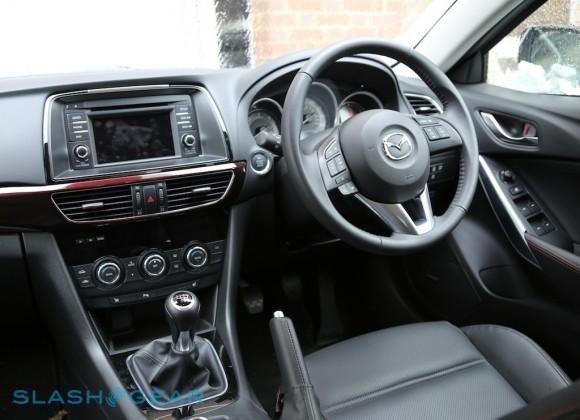
The murky, underwhelming clock and HVAC display of the CX-5 has been spruced up some for the Mazda6, and we can't argue with the tactile knobs and buttons. Similarly, the wheel is nicely sized (and leather-wrapped across the range) with Mazda sensibly deciding not to follow rivals and scattershot it with buttons and shortcuts. Instead, you get cruise control on the right and A/V on the left, along with a voice-command button we'll cover in the next section.
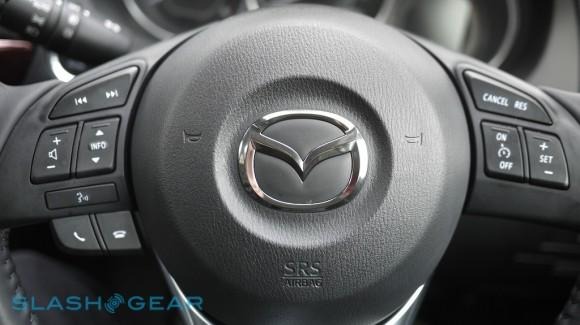
There are plenty of storage nooks, including a deep center armrest up front and sizable door pockets, while in the back there's room for three adults. Despite the sweeping roofline there's plenty of headroom, too, the seats being slung low enough to accommodate those six feet tall in comfort. The stylishly rising waistline – along with the tinted windows of the Sport variant – can make things a little difficult to see out of for younger passengers, however. Still, the contoured seats do a good job of holding people in place, even if the driver is getting a little carried away with the SKYACTIV handling, and though firm with the Sports suspension, the ride front and back is not uncomfortable even on longer road-trips.
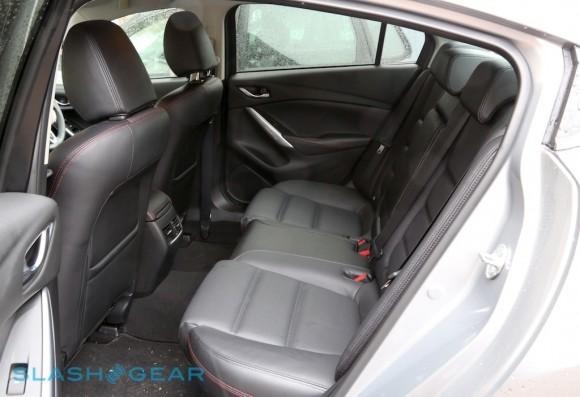
Those trips can be accompanied by a reasonable amount of luggage, too, thanks to a capacious rear. Seats up – they split 60/40, and can only be dropped down from inside the trunk for security reasons – there are 483l to play with, versus 506l in the Tourer (which expands to 1,632l when both the Tourer's seats are down). The opening itself is wide and relatively low, though can conveniently be opened from the key.
Technology
Mazda is keen to position itself as a tech-first company, and so the Mazda6 comes with most of the options boxes ticked, particularly if you specify the SE-L or Sport variants. Across the range you get cruise control; electric windows all round; a 5.8-inch color touchscreen atop a radio/single-slot CD player; Bluetooth for hands-free and streaming; both an aux-in and USB input for audio, hidden in the central armrest; and air-conditioning.
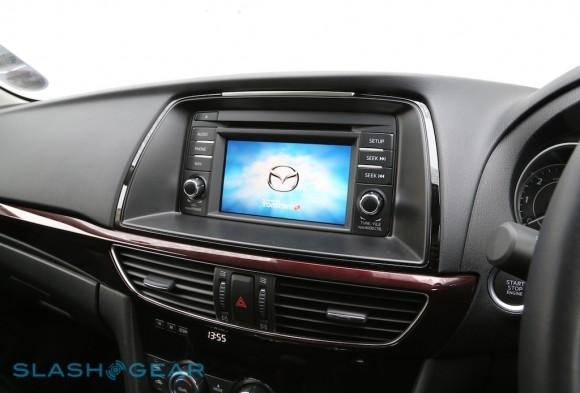
Our Sport tester, however, cranks that up even further, with dual-zone climate control and keyless entry; parking sensors front and rear, along with a reversing camera; rain-sensing wipers and an auto-dimming rear mirror; power adjustment and three-stage heating for the front seats (with two memory positions for the driver's side); and a Bose surround sound audio system with a total of eleven speakers and dynamic noise compensation using a microphone hidden in the cabin.
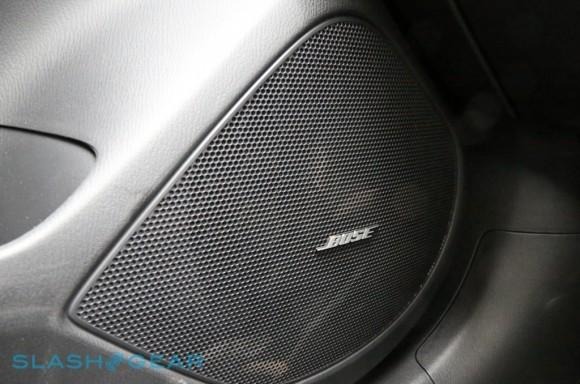
That's a fair amount of gadgetry, and there are a few different ways to control it, some it has to be said better than others. As well as the touchscreen sat on top of the dashboard – which has a few knobs and buttons around it, for jumping into navigation, audio, and phone, and controlling volume and tuning, there's a multifunction dial next to the parking brake which along with rotating can be pushed in four directions and pressed in to select. That's surrounded by another cluster of shortcut buttons – again, for audio, phone, navigation, and setup, as well as two back-keys – in the hope that you'll not reach out and tap at the touchscreen when driving.
Mazda6 Technology Review:
For the basics, like adjusting volume or whipping through radio channels, the dial works well, but things get a little more complex if you try to do everything with it. What would normally require you to simply stab at the screen to change or select can demand some adroit maneuvering with the dial, to make sure you're first highlighting the right section and only then scrolling through it.
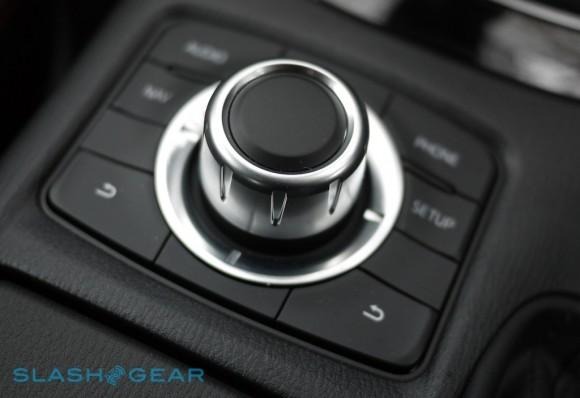
It's worth taking the time to get familiar with it, though, as there's plenty you can do with the Mazda's standard-fit entertainment system. The radio supports the usual presets and digital tuning, but we spent most time using Bluetooth to stream from our smartphone: both local tracks and streaming services like Spotify worked perfectly, and we were able to control playback using the Mazda6's steering wheel mounted controls along with see artist, track, and album information on the display, together with phone battery status.
USB and aux-in playback works much in the same way, and there's a thoughtful notch cut out for you to snake a cable out of the center armrest so you can use the device while still having somewhere to rest your elbow. Up to seven Bluetooth device pairings can be stored, with multipoint for having more than one active simultaneously, and the Mazda6 automatically resumes Spotify playback when you bring your phone back into the car, and pauses/resumes either side of a call.
The Bose speaker system holds up to scrutiny too, filling the car with loud, clear audio that sounds fantastic. Bose includes its optional center-point audio processing, which adjusts the various speaker settings to remove some of the directionality of the music and make it sound harmonious no matter where you're speaking (rather than, say, louder from whichever speaker you're closest to). It's better suited to some musical types than others, we have to say; classical and pop benefited, with a more even quality to the audio, but rap and R'n'B lost some of their punchiness. Luckily it's easy to switch on and off in the settings.
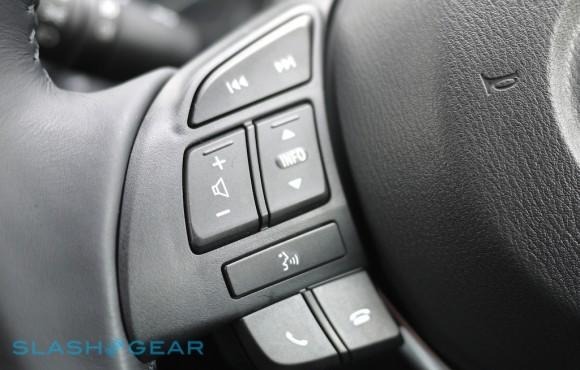
In the phone page, you can optionally download your phonebook to the car's internal storage, for easier dialing of contacts, and set a number of speed dial favorites. However, the Mazda6 can also suck out your phone's text messages, reading them out to you so that you needn't take your hands of the wheel or your eyes off the road. We had no problems being heard on calls, even competing with 70mph road noise.
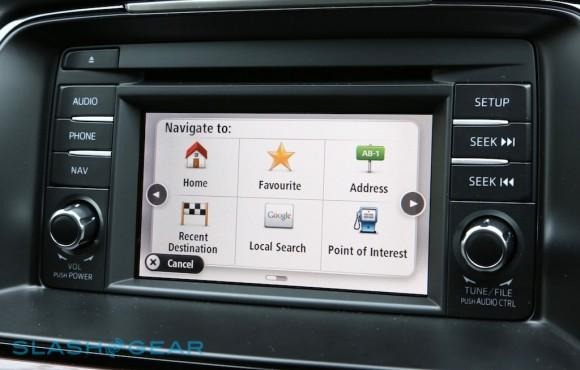
Unfortunately, the same speech clarity can't be said for the voice control system. For the basics, hitting the button on the steering wheel and asking for a phone number works as you'd expect, but when you factor in the optional TomTom-powered navigation system, it becomes more frustrating. In theory, drivers should be able to say an address and have a list of search results shown on-screen, from which they can select by calling out the list number of the right option. In practice, most of the time we struggled to get the system to recognize the address we intended and, coupled with the lengthy pauses before search results were returned, we generally resorted to manually searching using the on-screen keyboard.
It's a shame, because the TomTom system itself works well. If you're familiar with one of the company's standalone PNDs then the interface in the Mazda6 should present few surprises, with comprehensive mapping data, live traffic updates, automatic re-routing based on hold-ups further along your journey, and a huge database of points-of-interest. A range of voices and on-screen icons are available for guidance, with instructions cutting into music playback as the track temporarily fades in volume.
Pricing
In the UK, the Mazda6 kicks off at £19,595 for the SE saloon with the 2.0l petrol engine, or £21,795 for the 2.2l diesel. The cheapest Tourer is the £22,545 SE 2.2l diesel. The 2.2l diesel Sport saloon we spent most time with begins at £25,495; you'll pay a £1,200 premium for the auto gearbox.
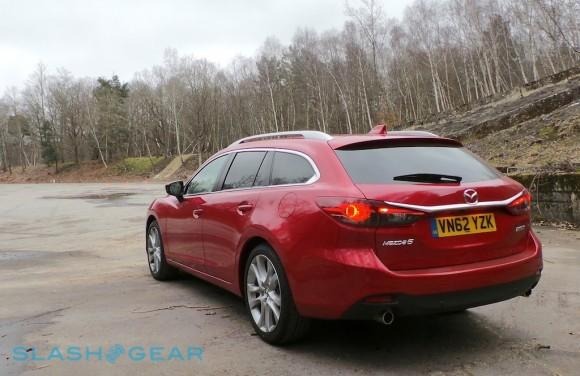
As for the US version, the Sport sedan begins at $20,880 (pre-destination charges and other fees), while the Touring is from $24,495. The Grand Touring – which makes the Bose audio system, TomTom navigation, keyless entry, and other features usually part of the Touring "Technology Package" standard – begins at $29,495.
That makes the Mazda6 a little more expensive out of the gate than, say, a Ford Mondeo, but it also comes with a higher degree of standard specifications.
Wrap-Up
The old Mazda6 was, not to put too fine a point on it, forgettable. Seats and an engine in a box on some wheels. That the new Mazda6 surges off the forecourt with such eye-catching styling and on-road polish makes it a huge advance, and it's one that in most areas punches above its price.
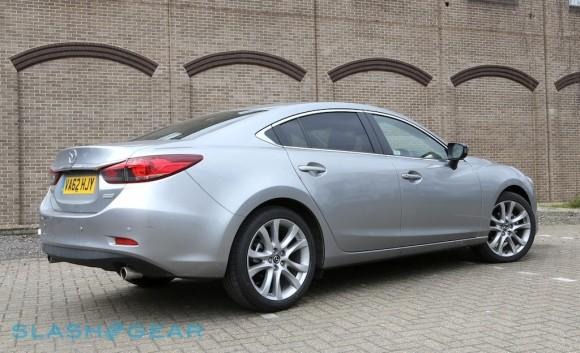
Curvaceous, swooping design makes the car distinctive and handsome, a welcome diversion from the Germanic crispness that seems to have proliferated among Volkswagen, GM, Ford and others. Only the somewhat frustrating usability of the in-cabin tech and the slightly less-than-gaping luggage opening (unless you opt for the Tourer) mar the experience. Meanwhile the driving experience is enough to make you forget you're in a not-insubstantial four-door; we'd opt for the diesel engine and manual gearbox, if given the choice, which pairs decent economy with solid performance to match the capable chassis.

